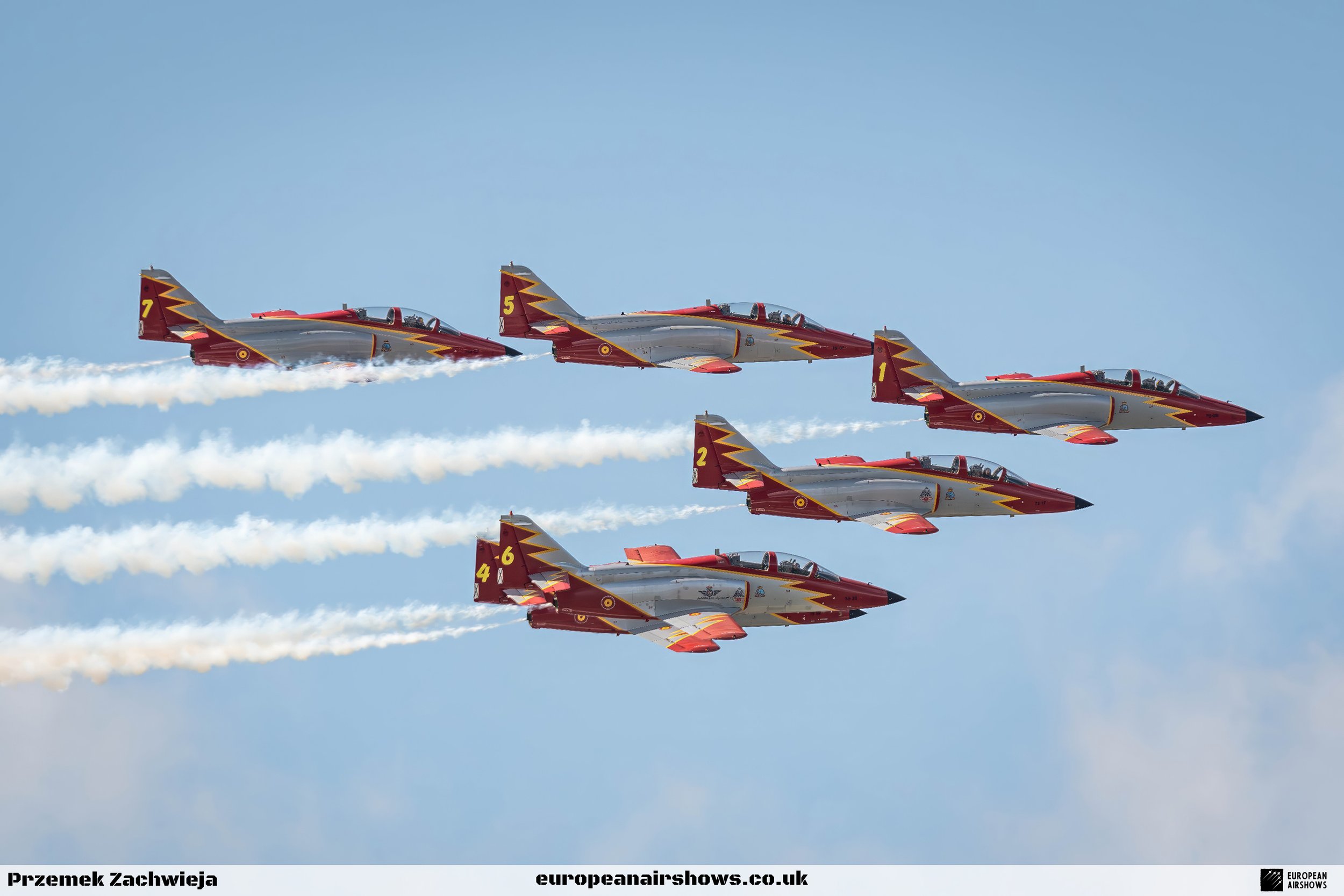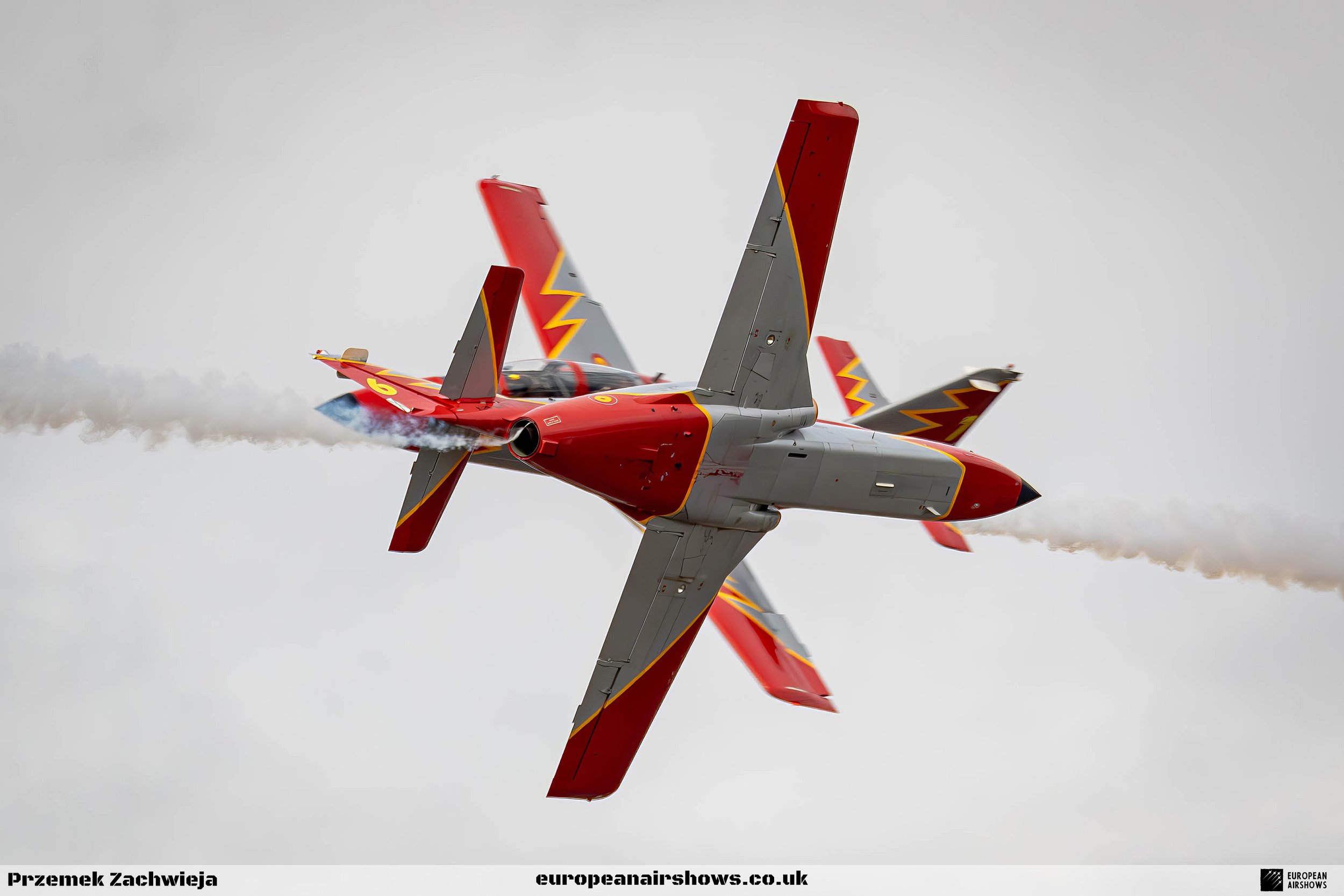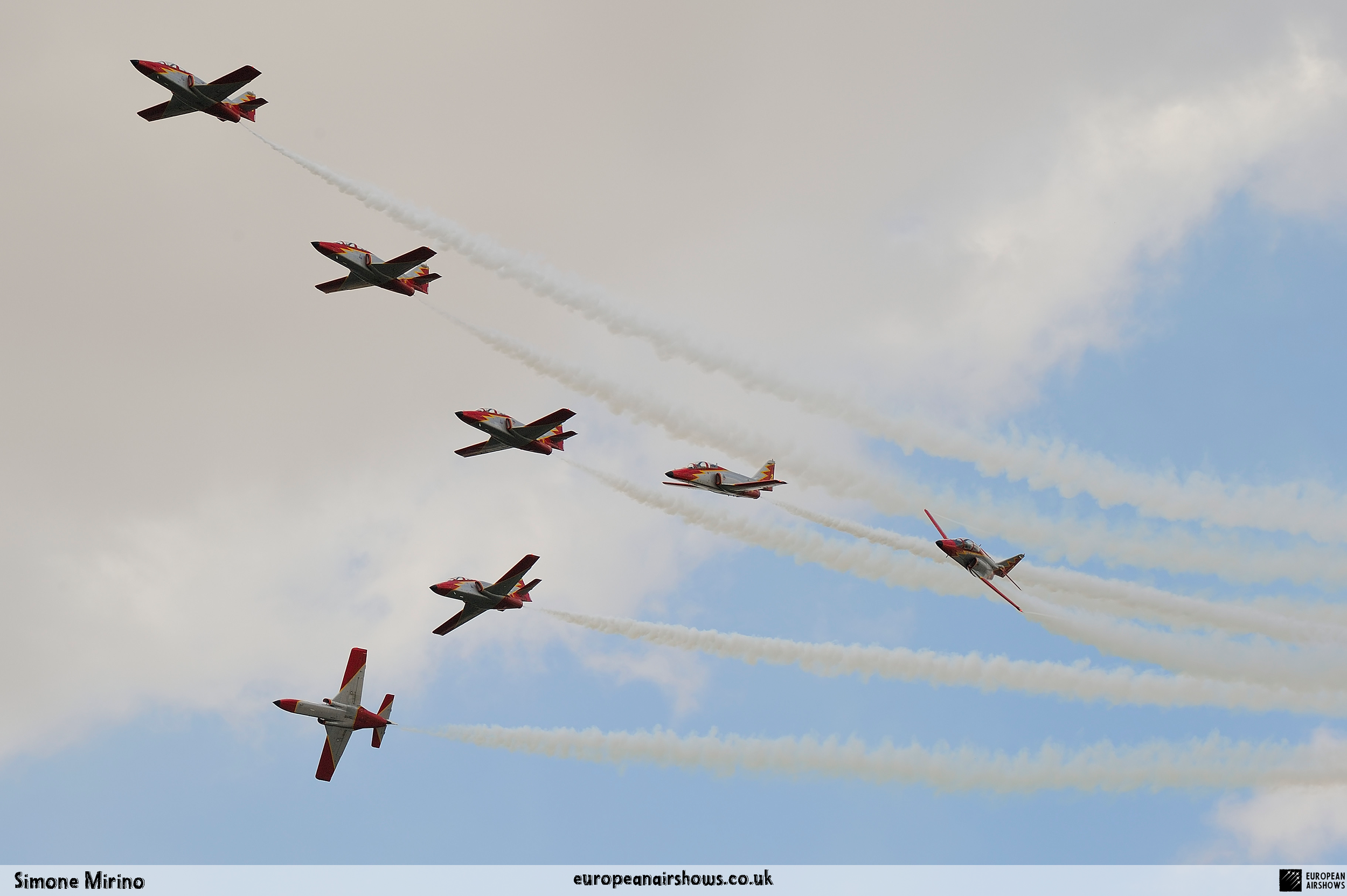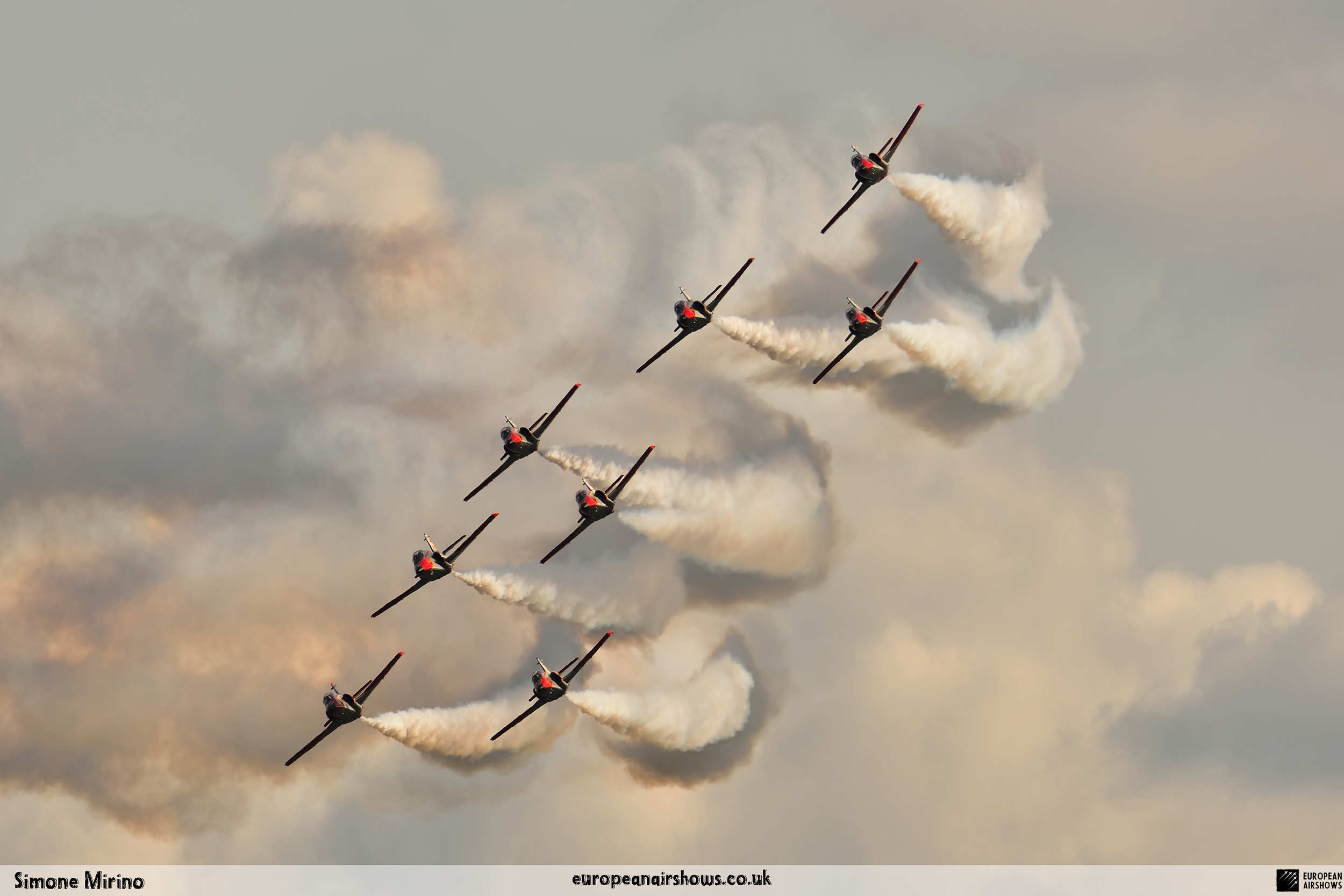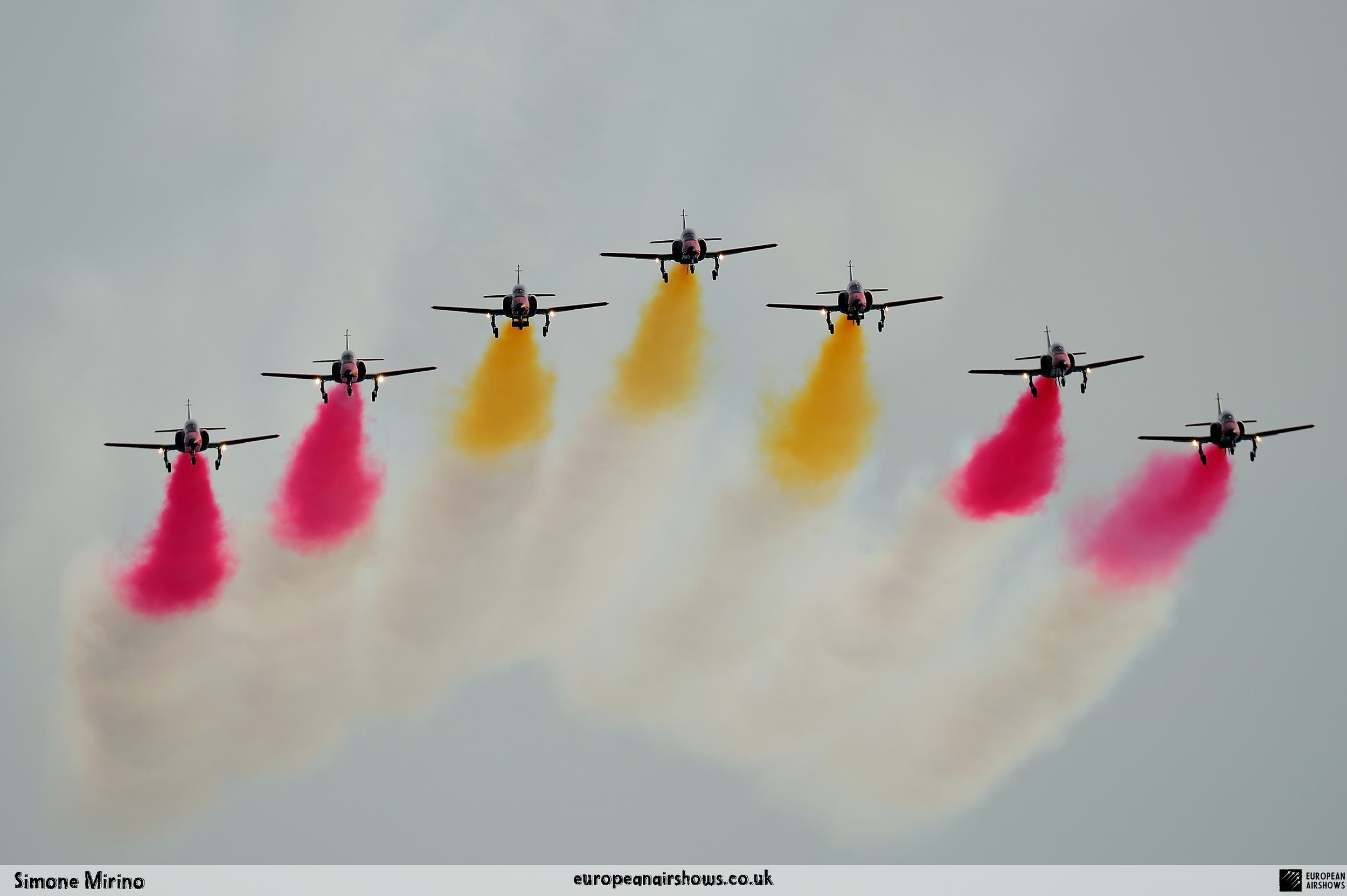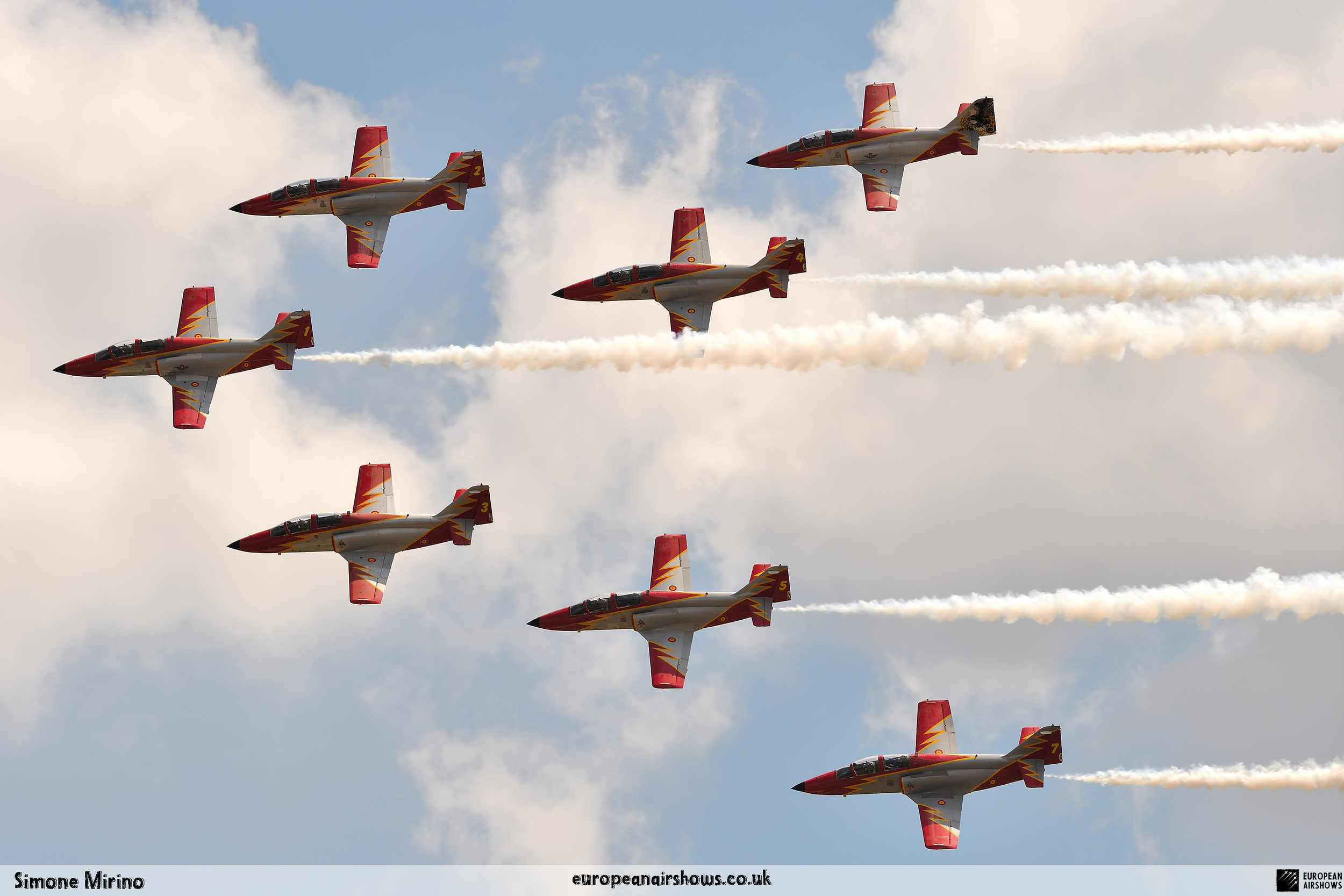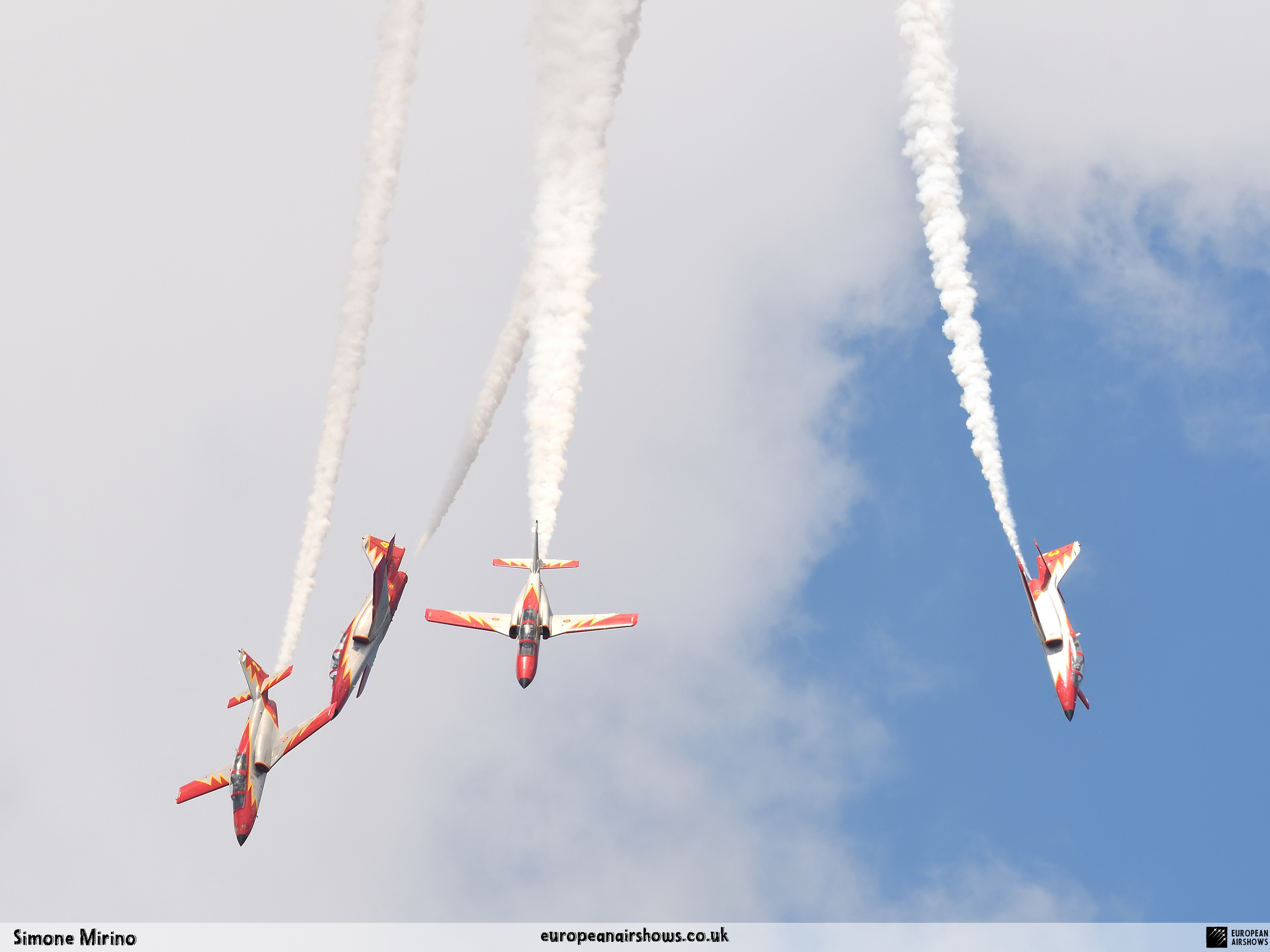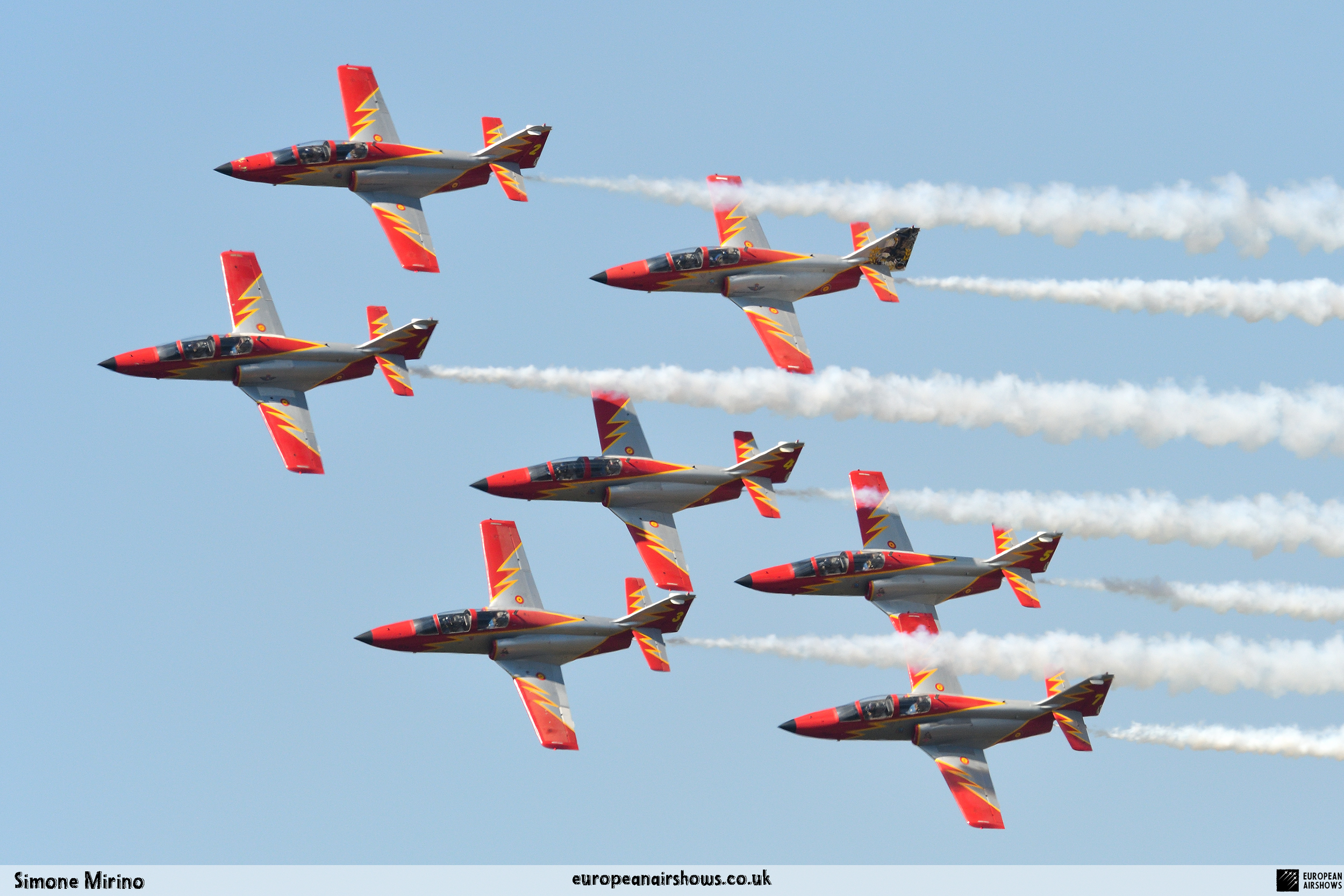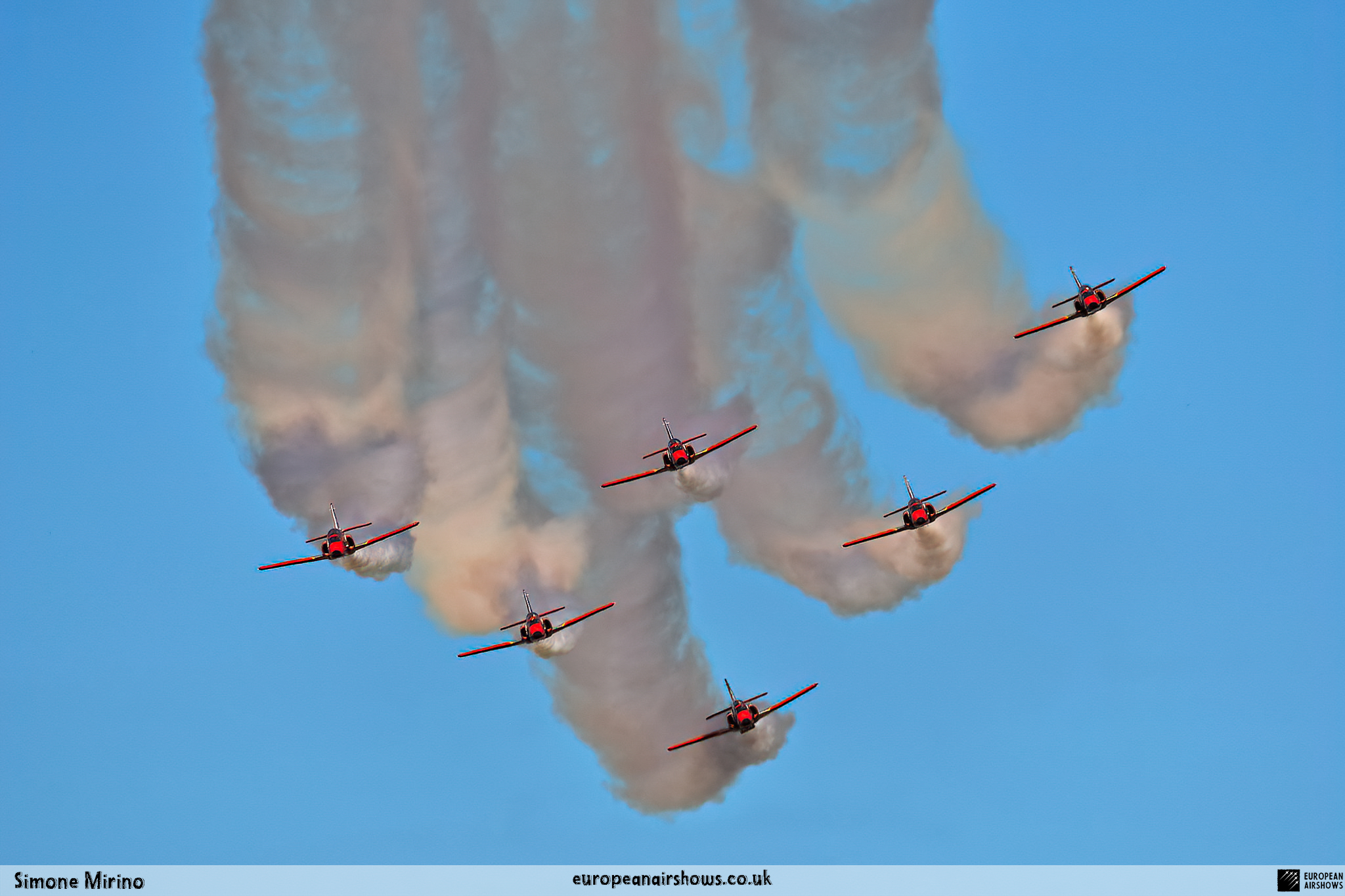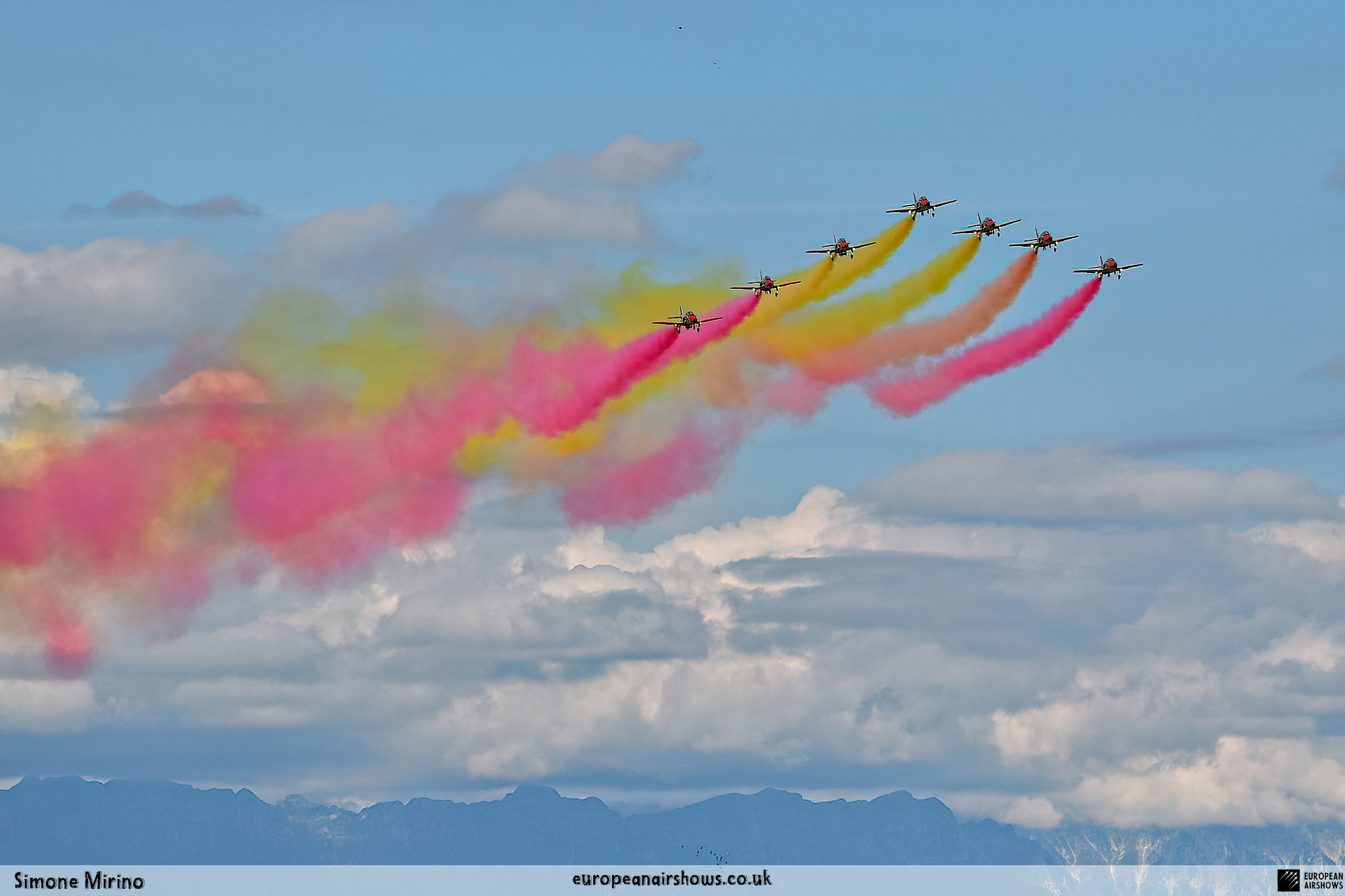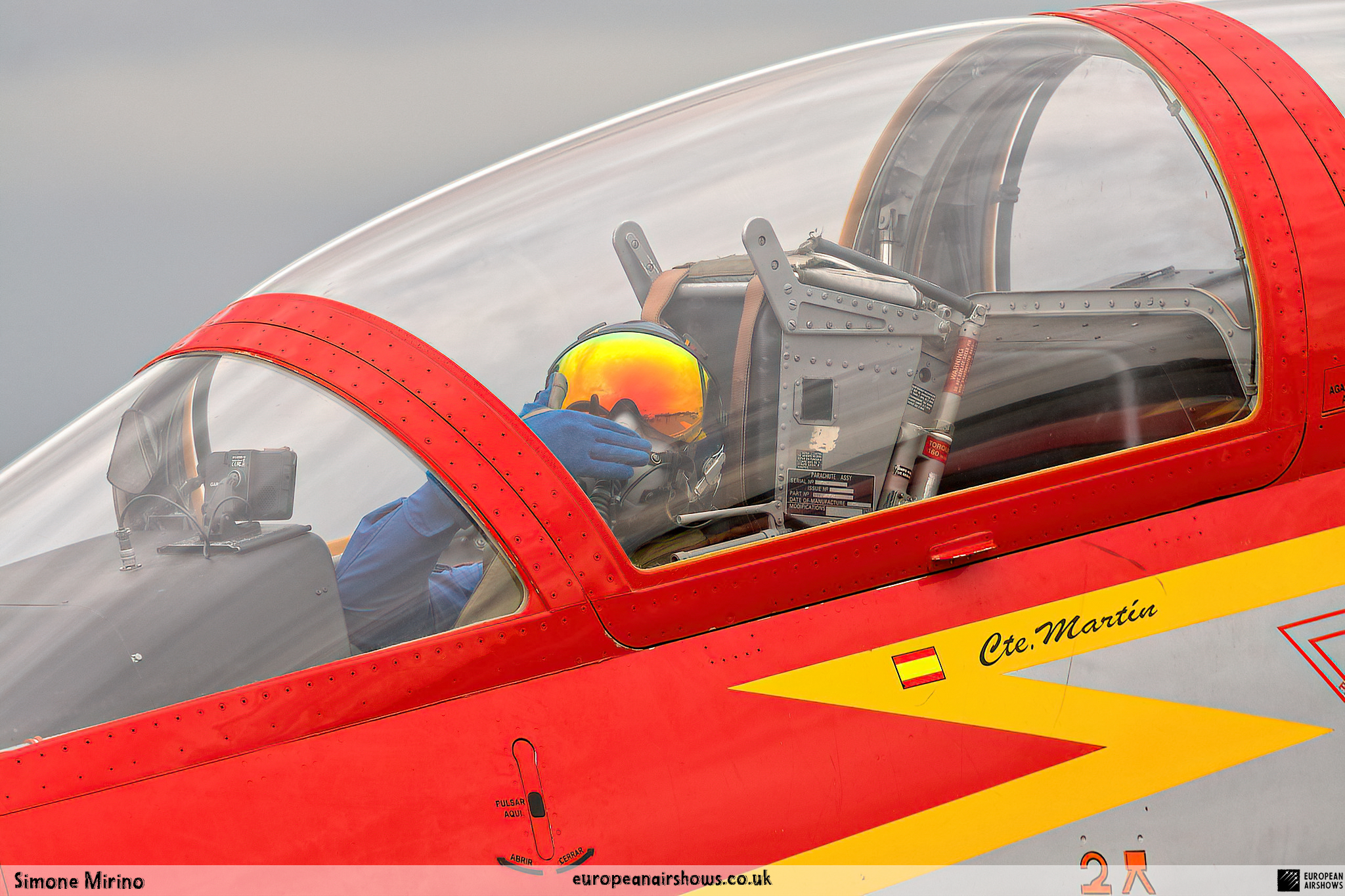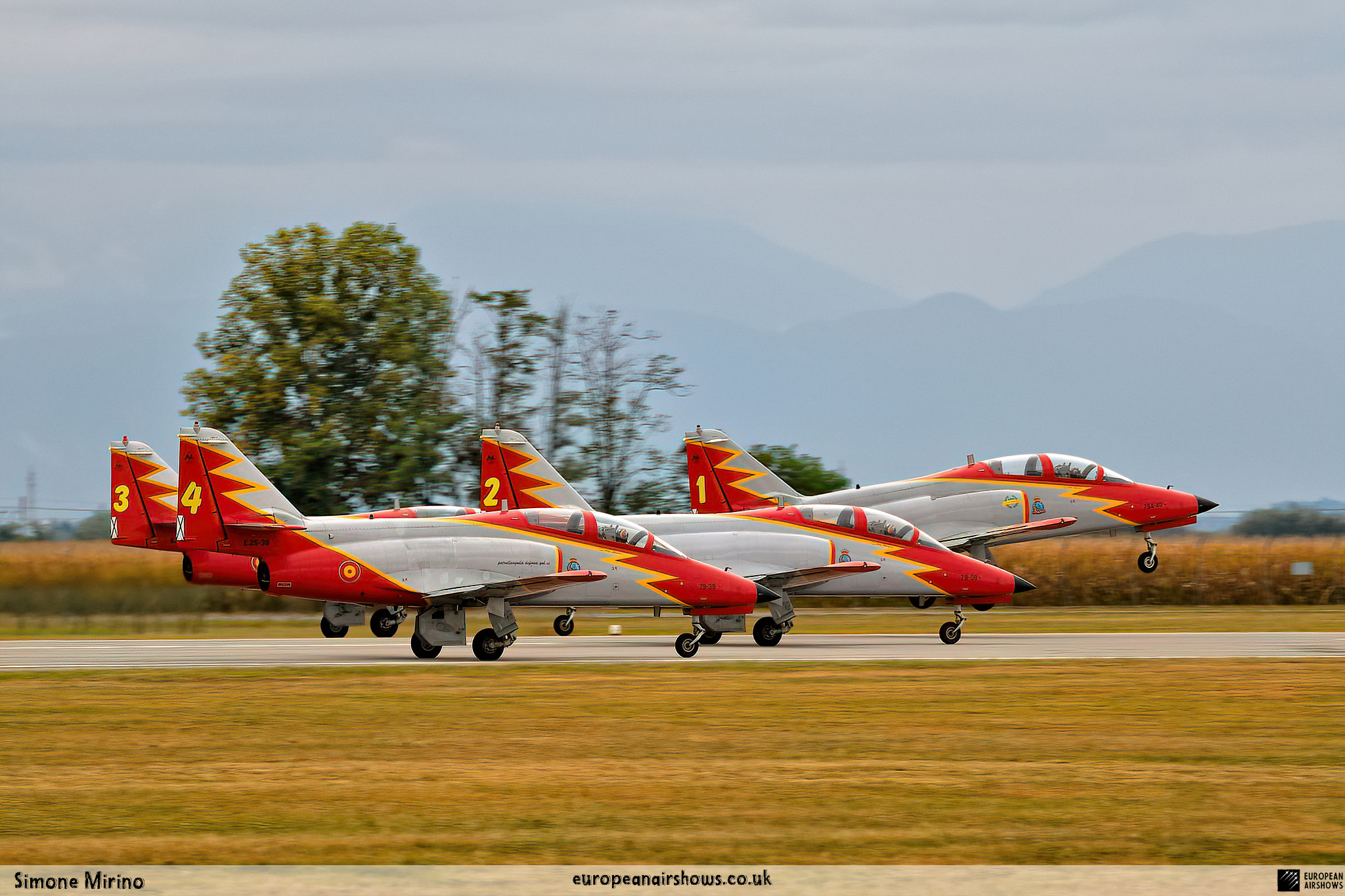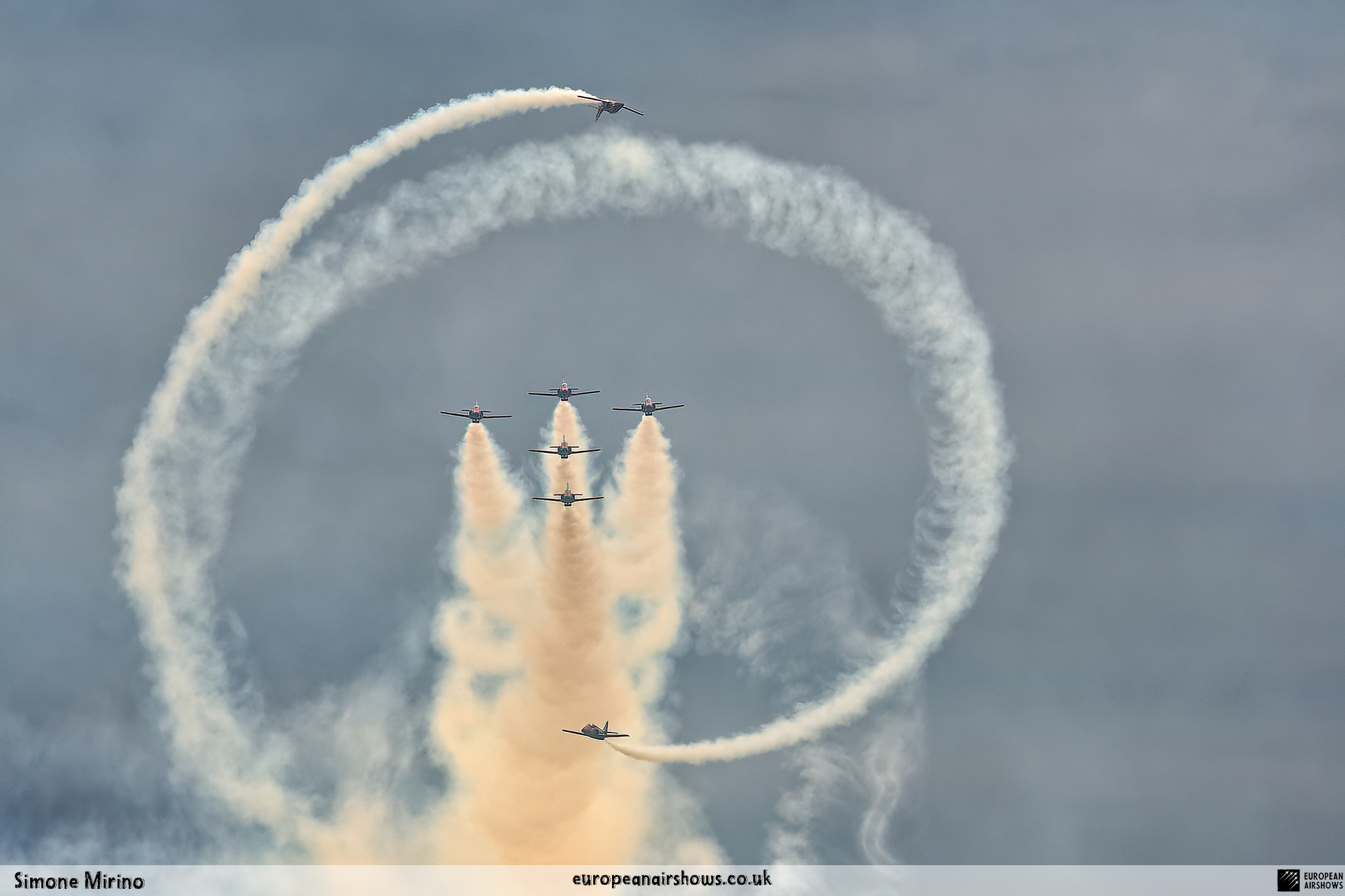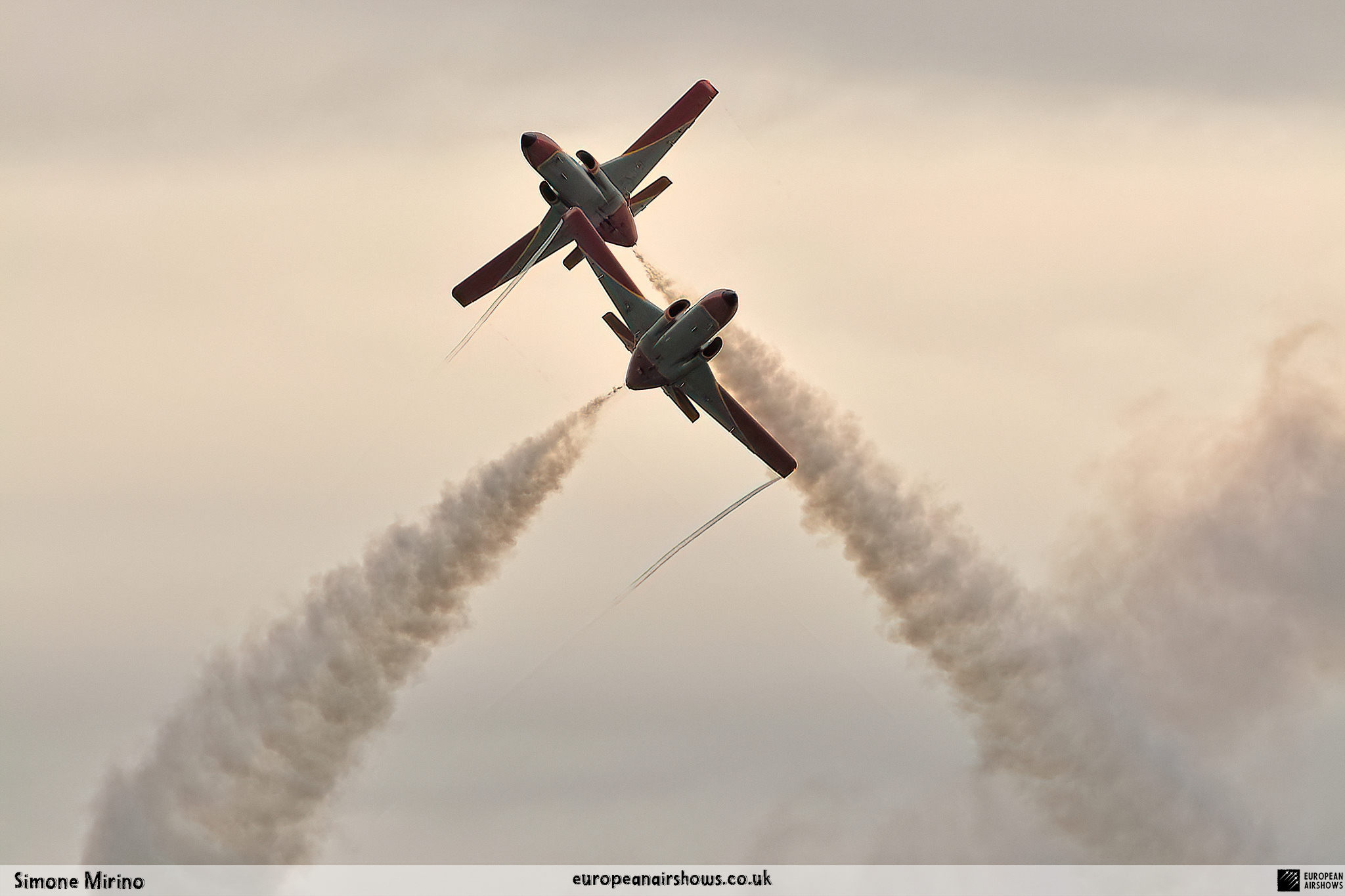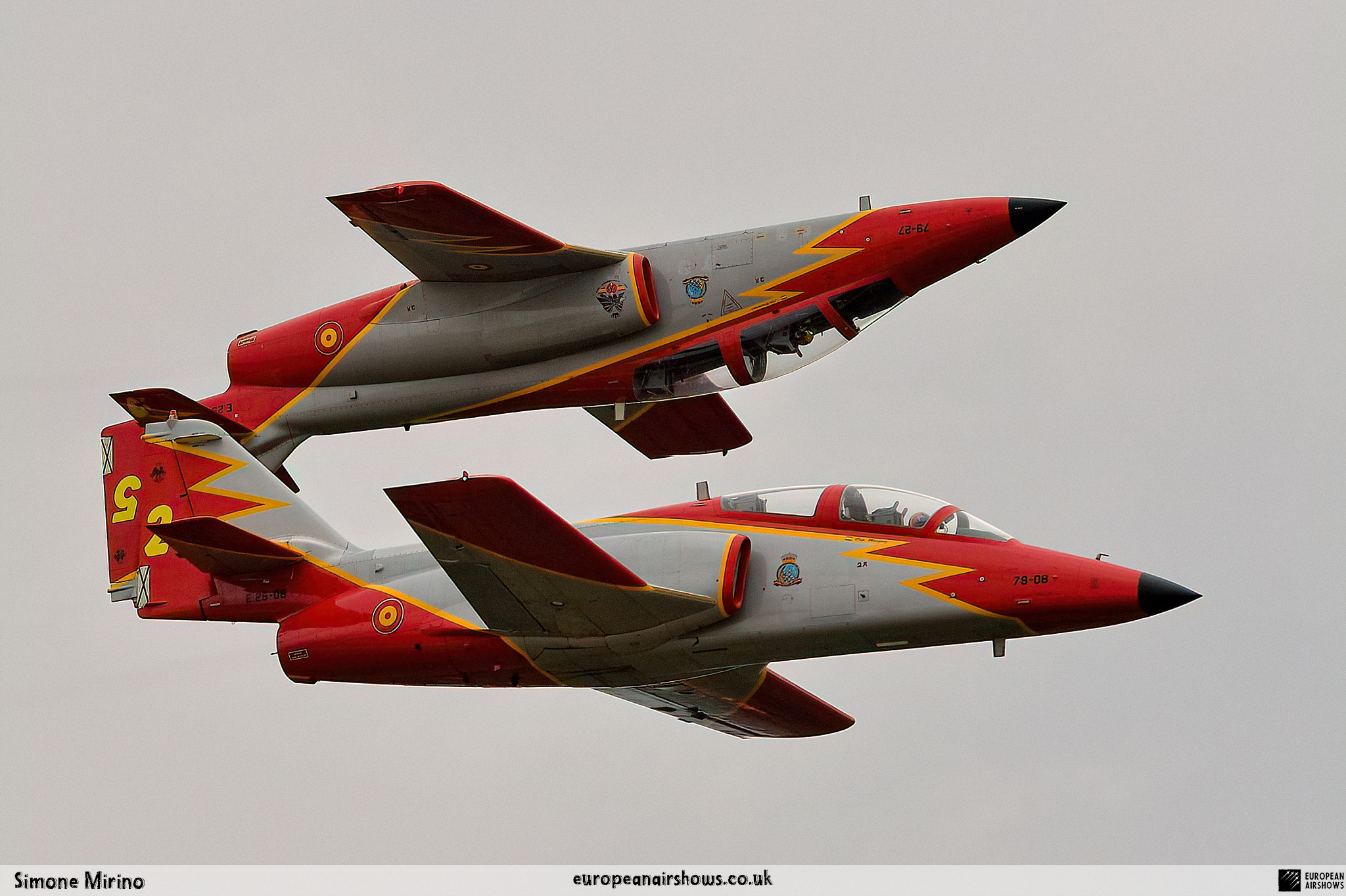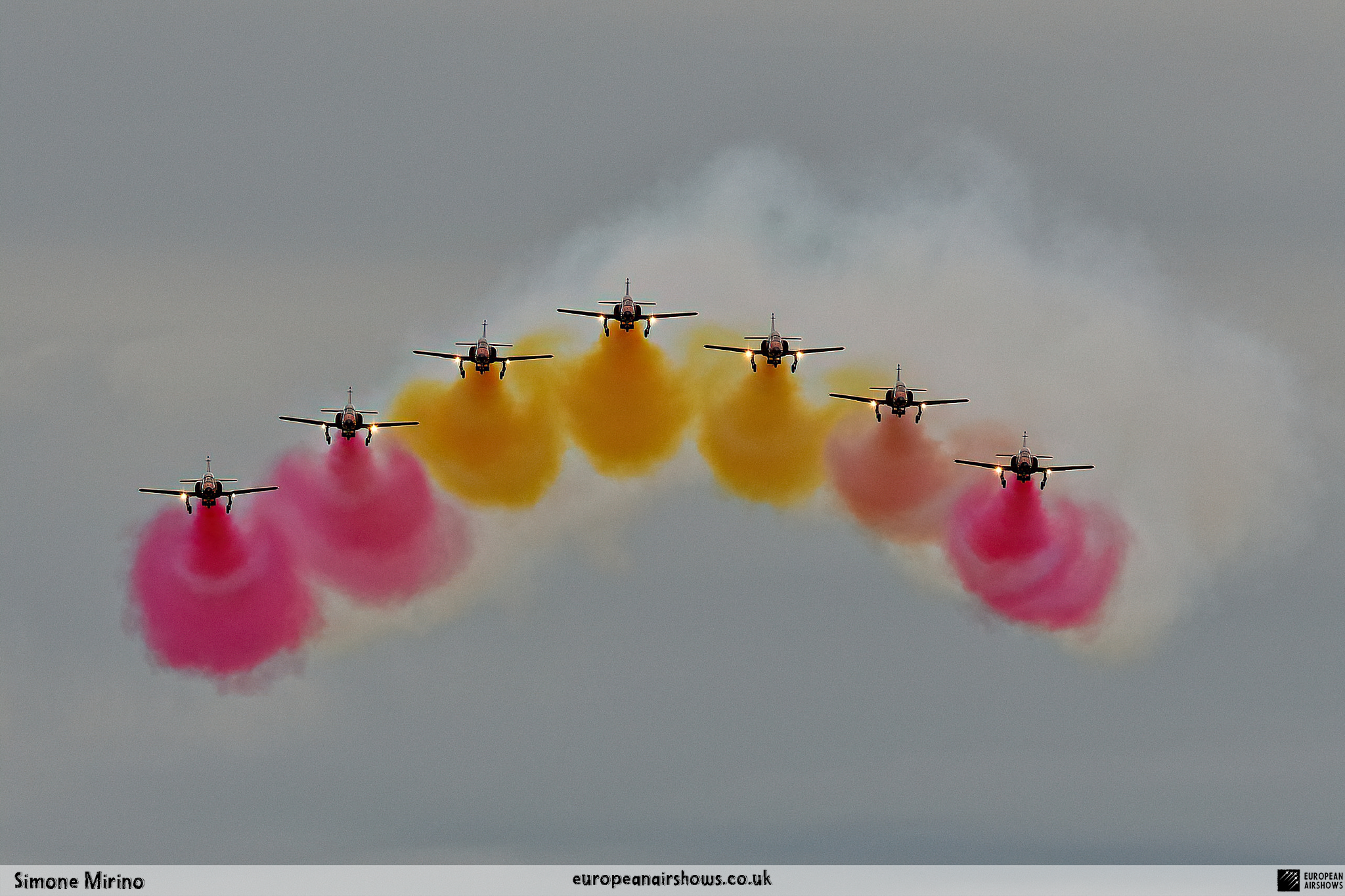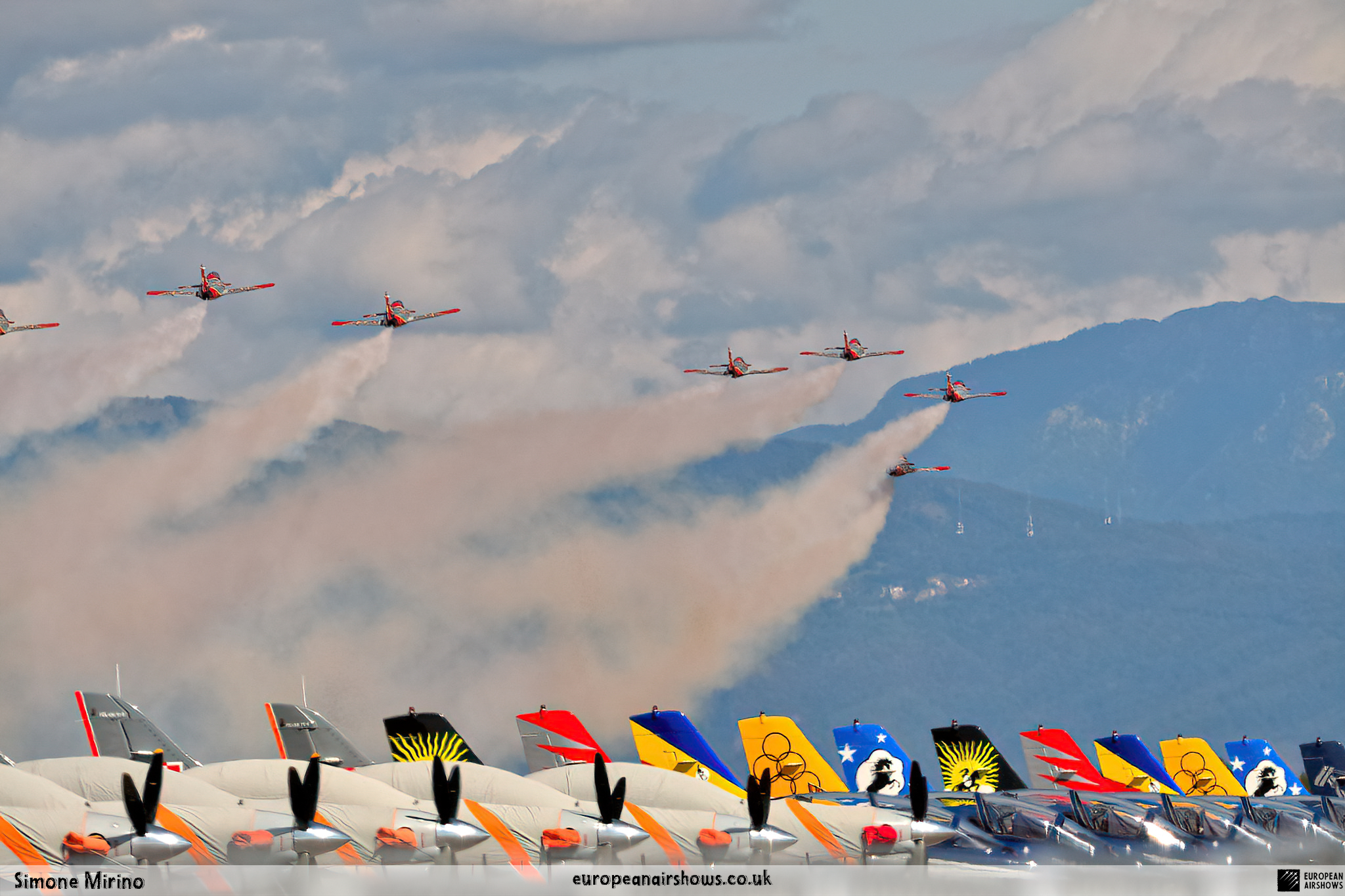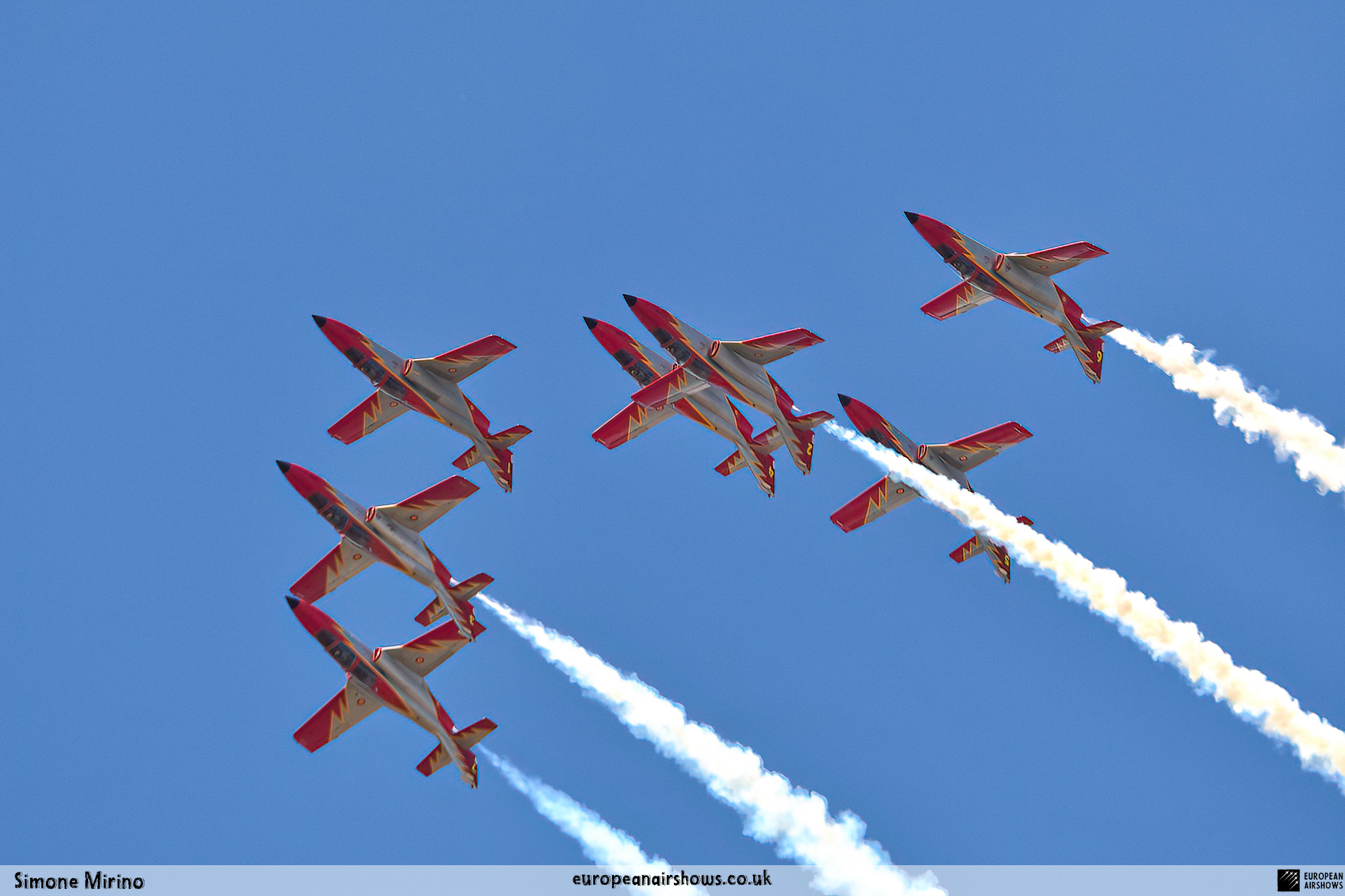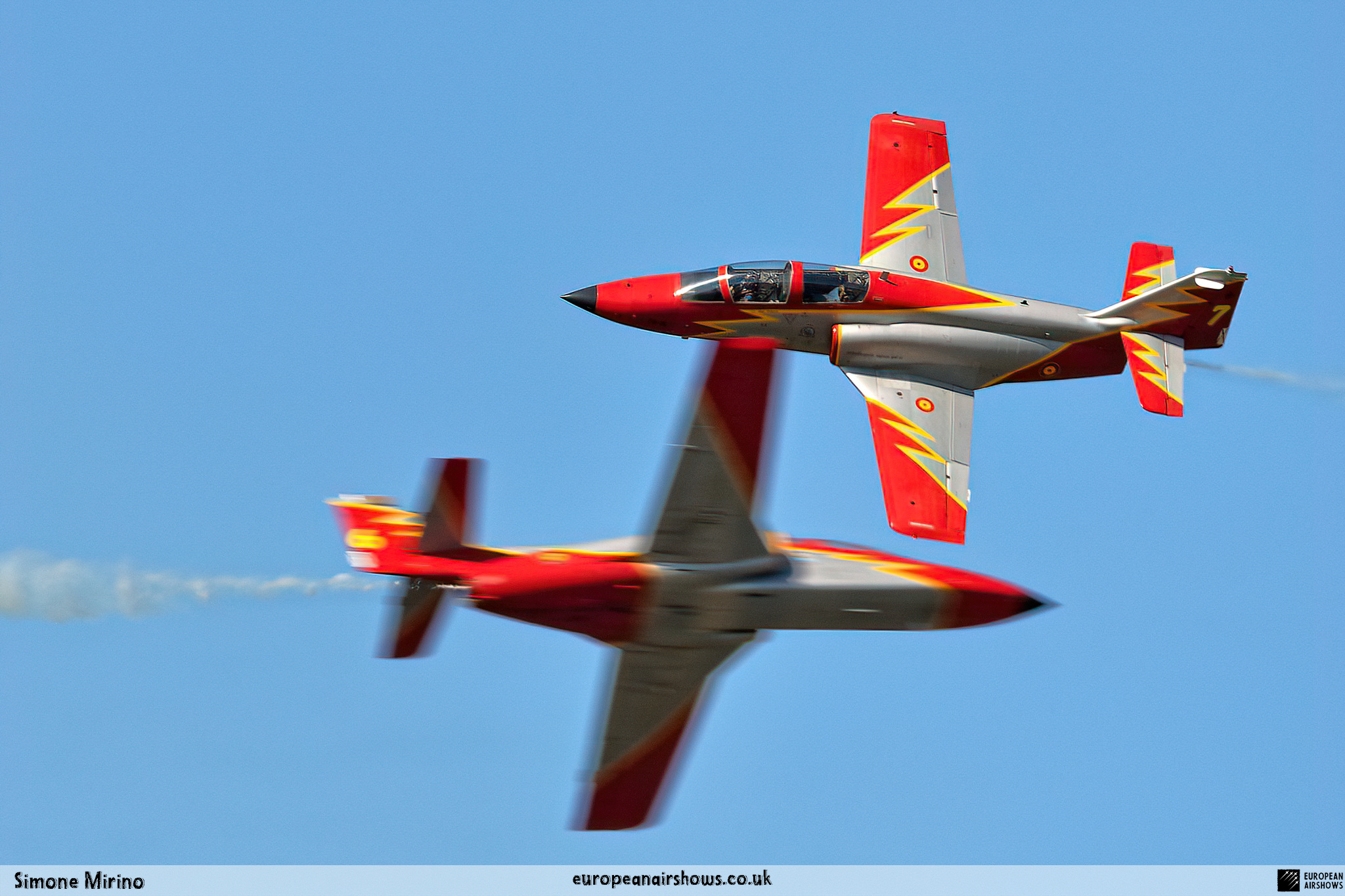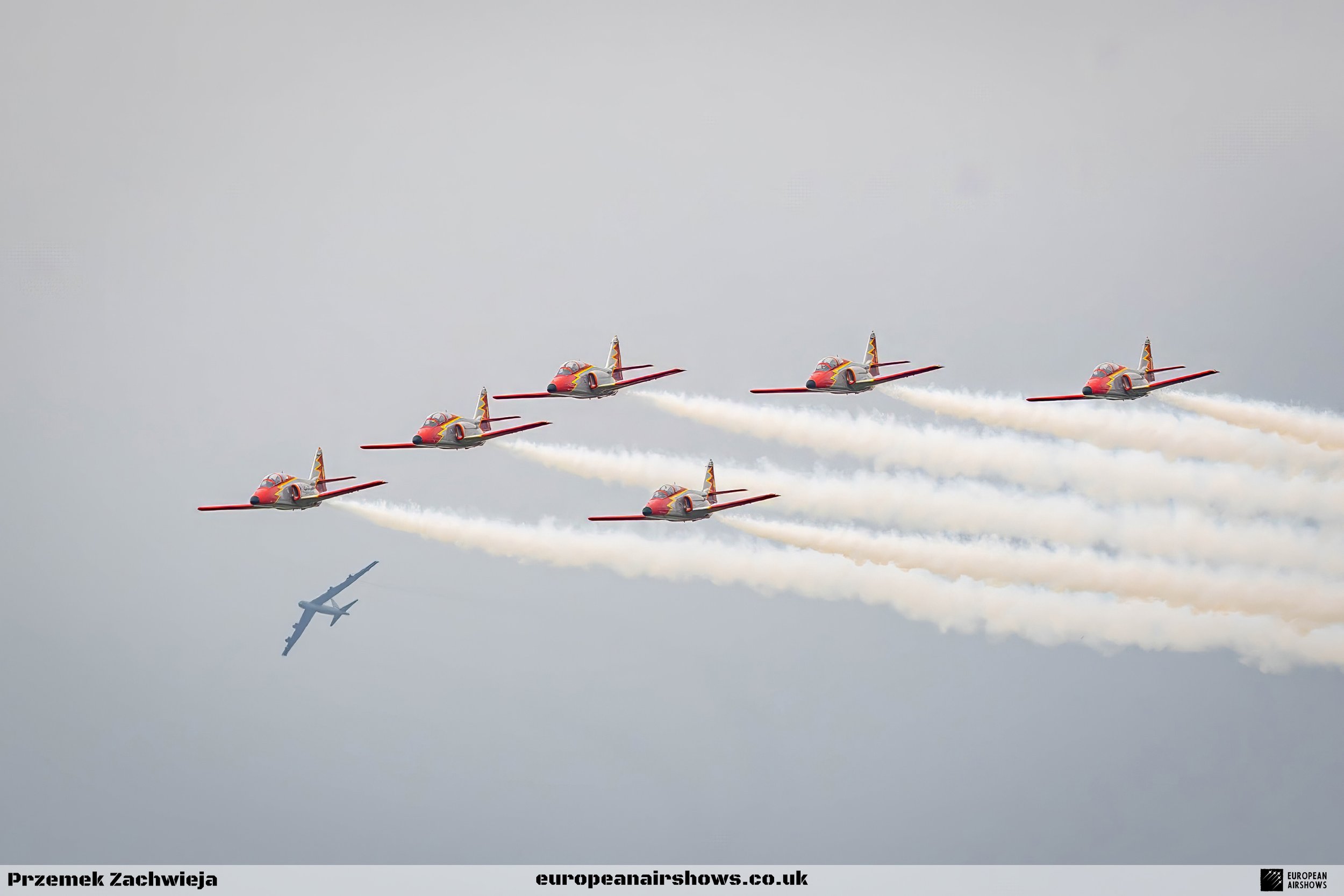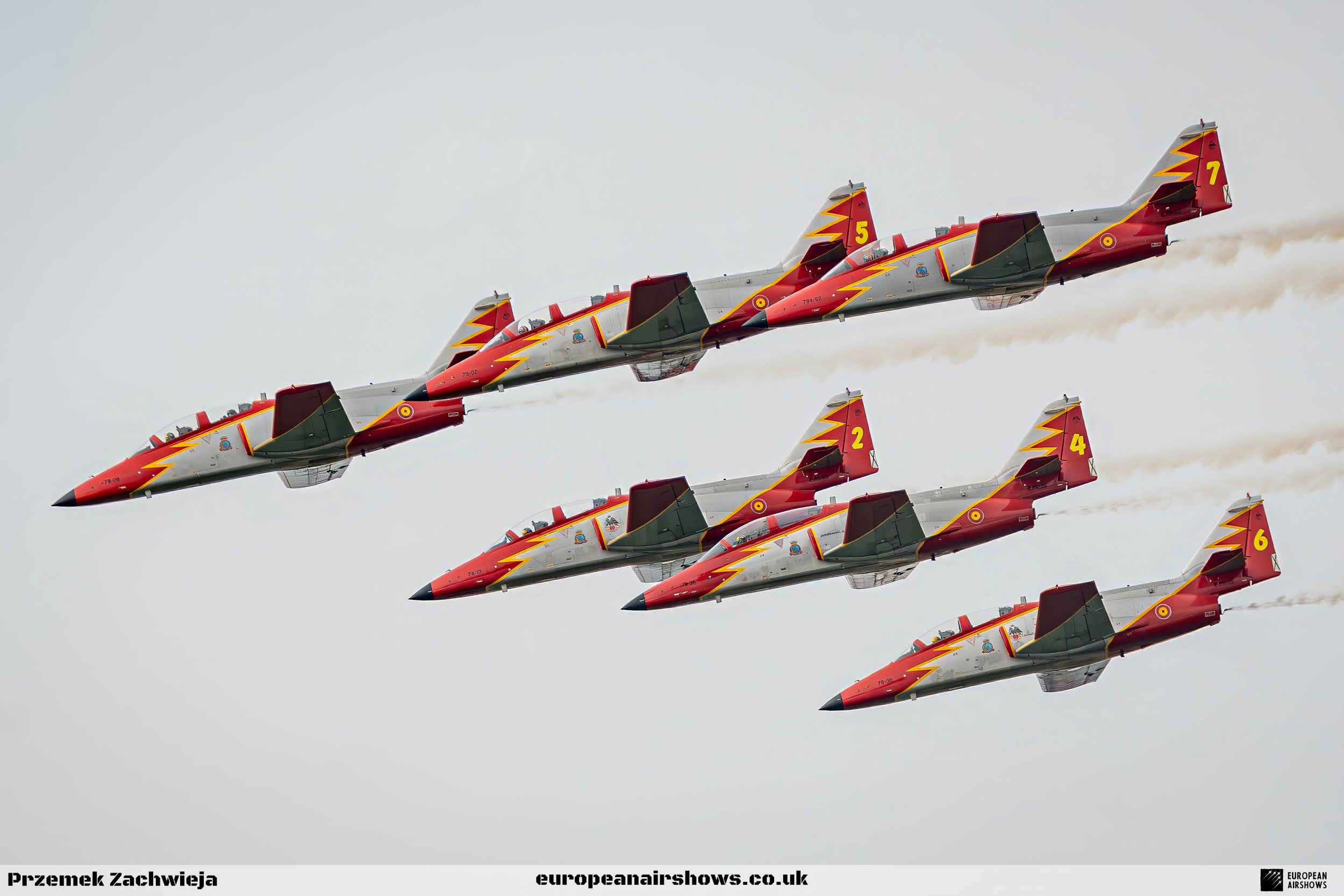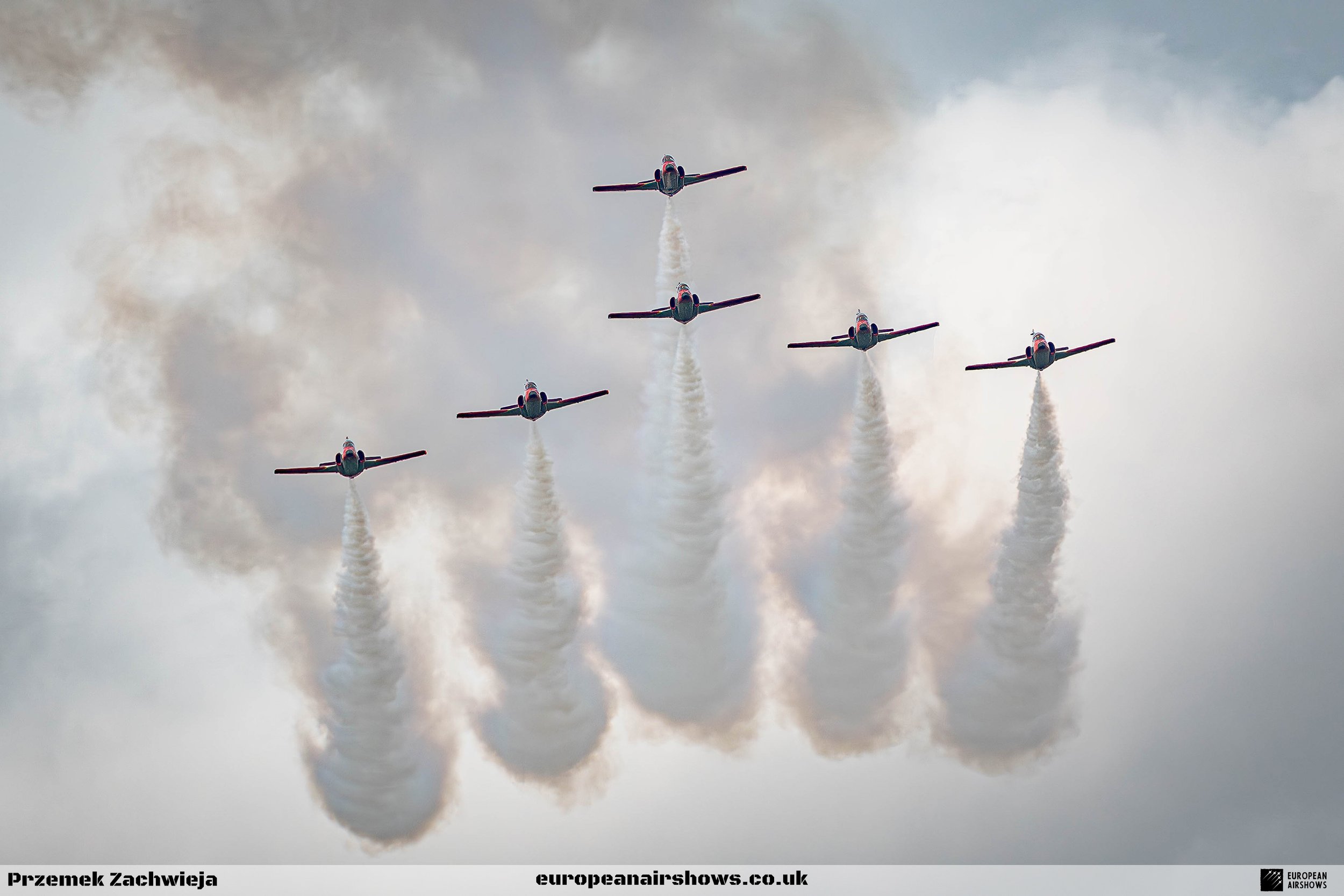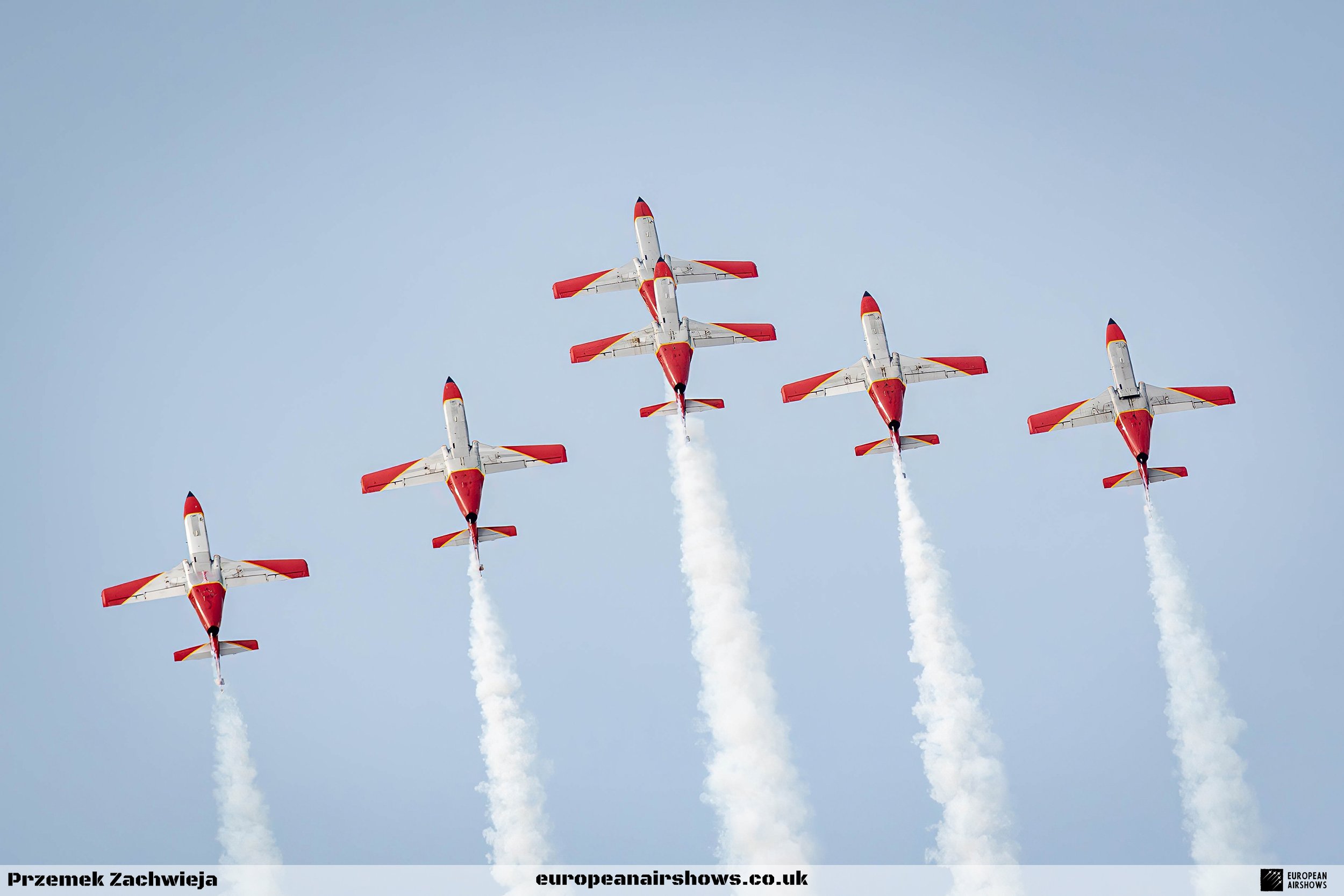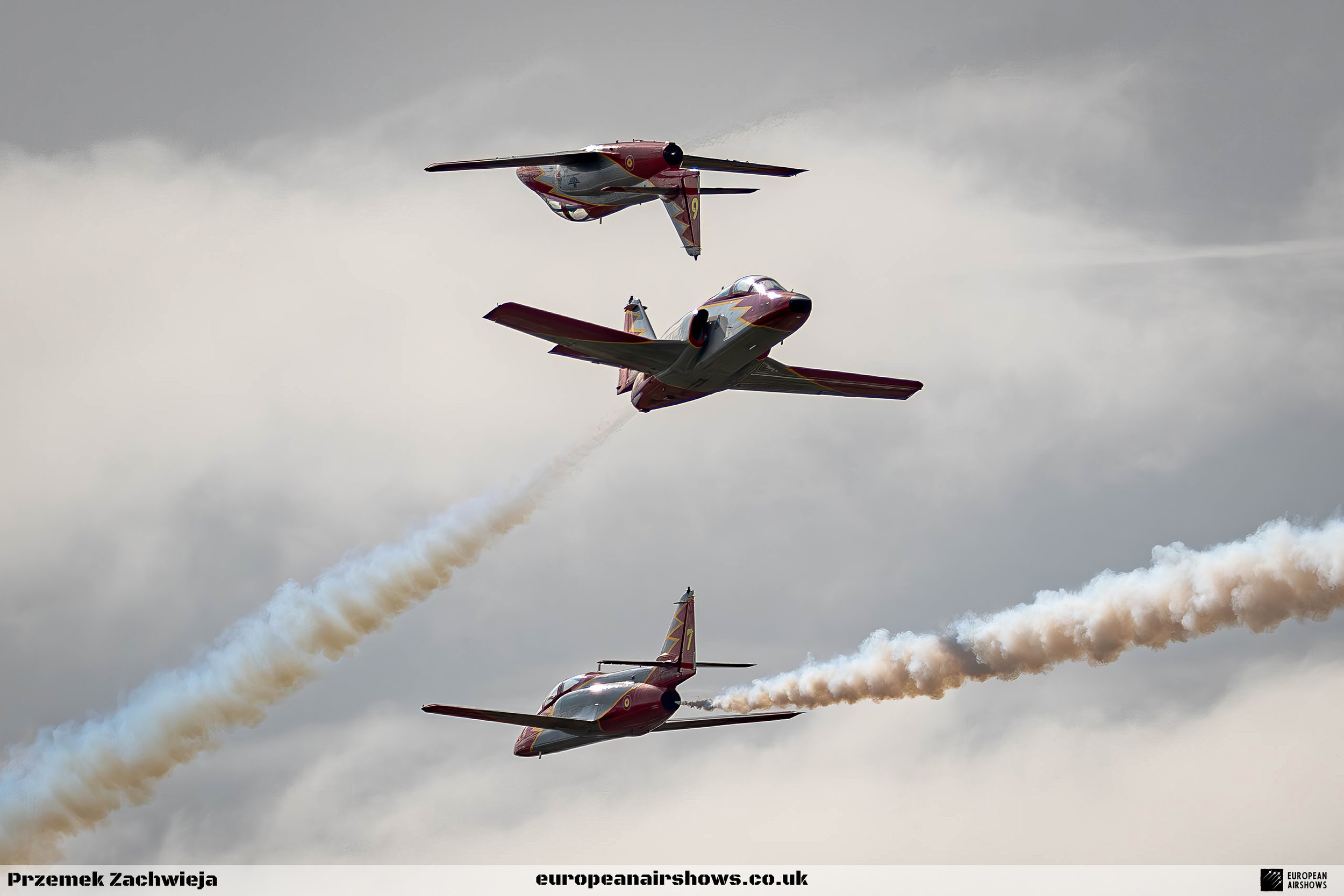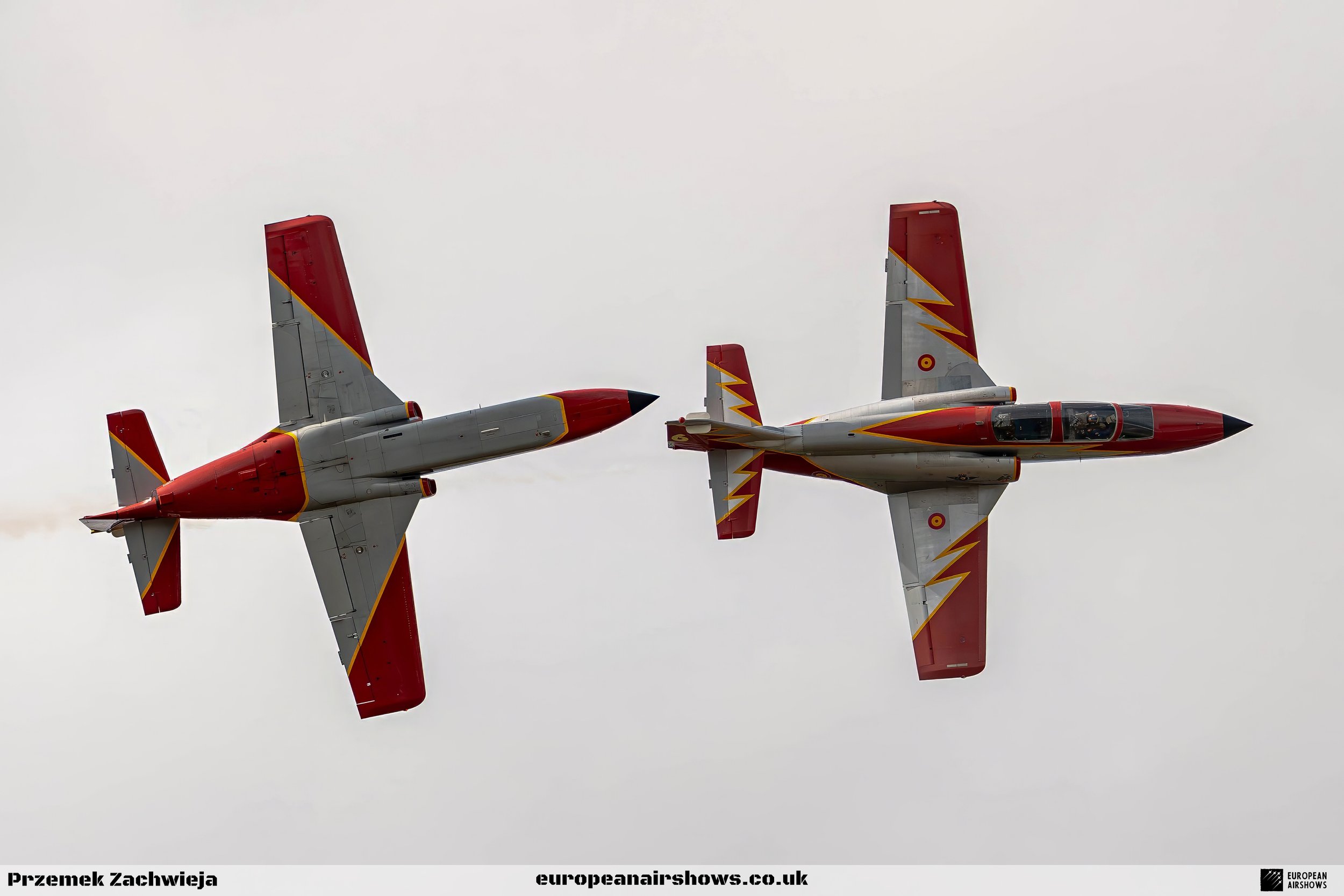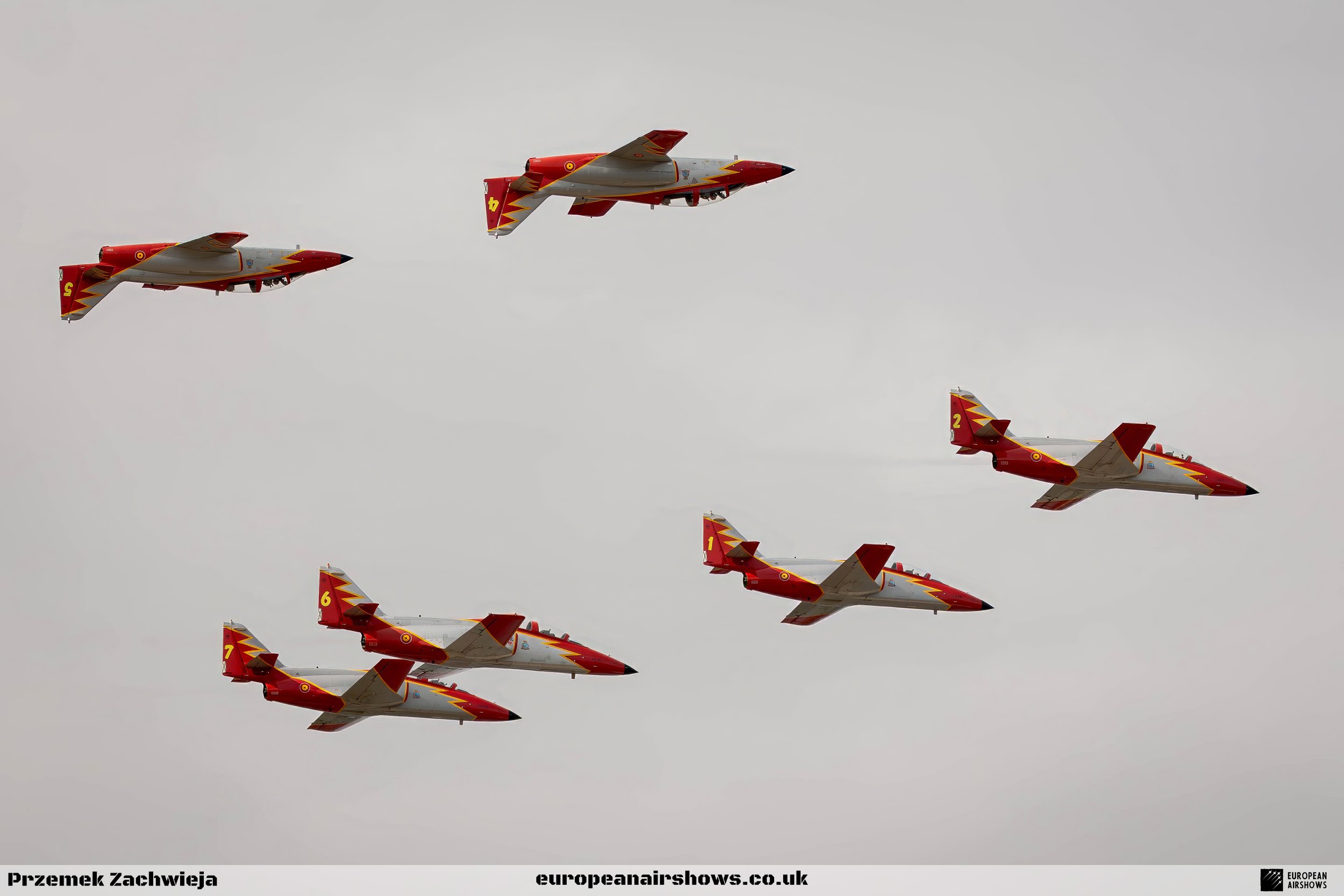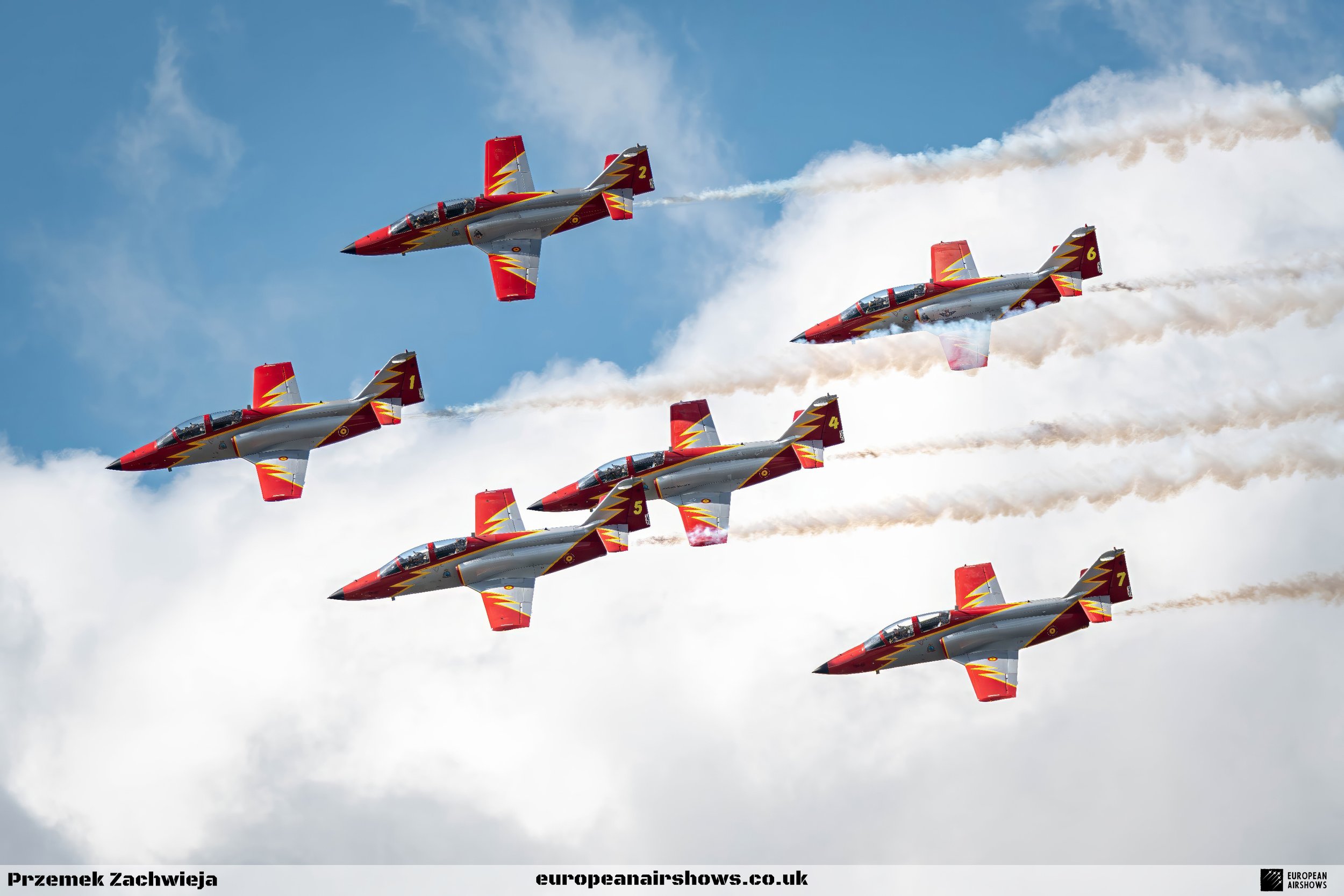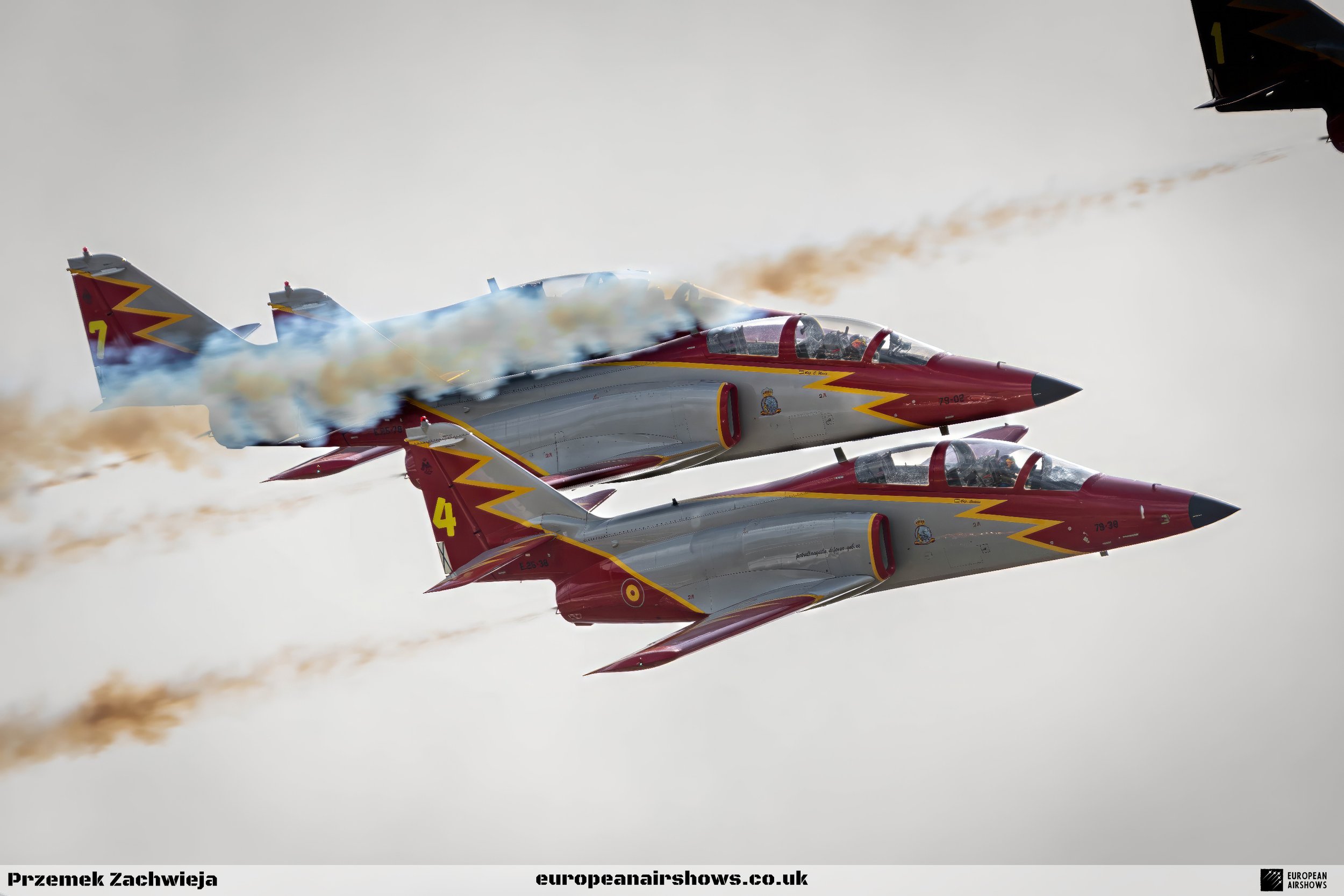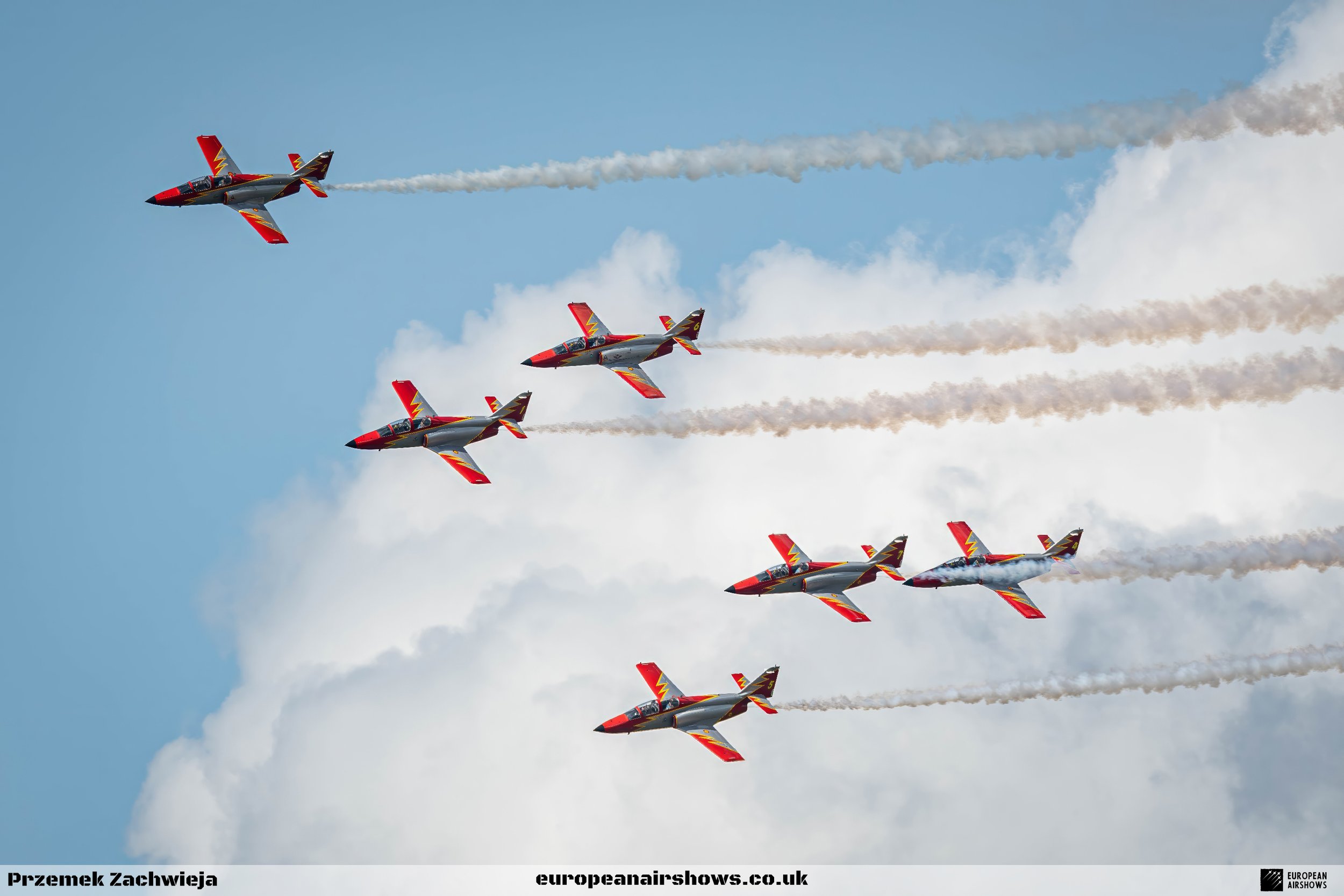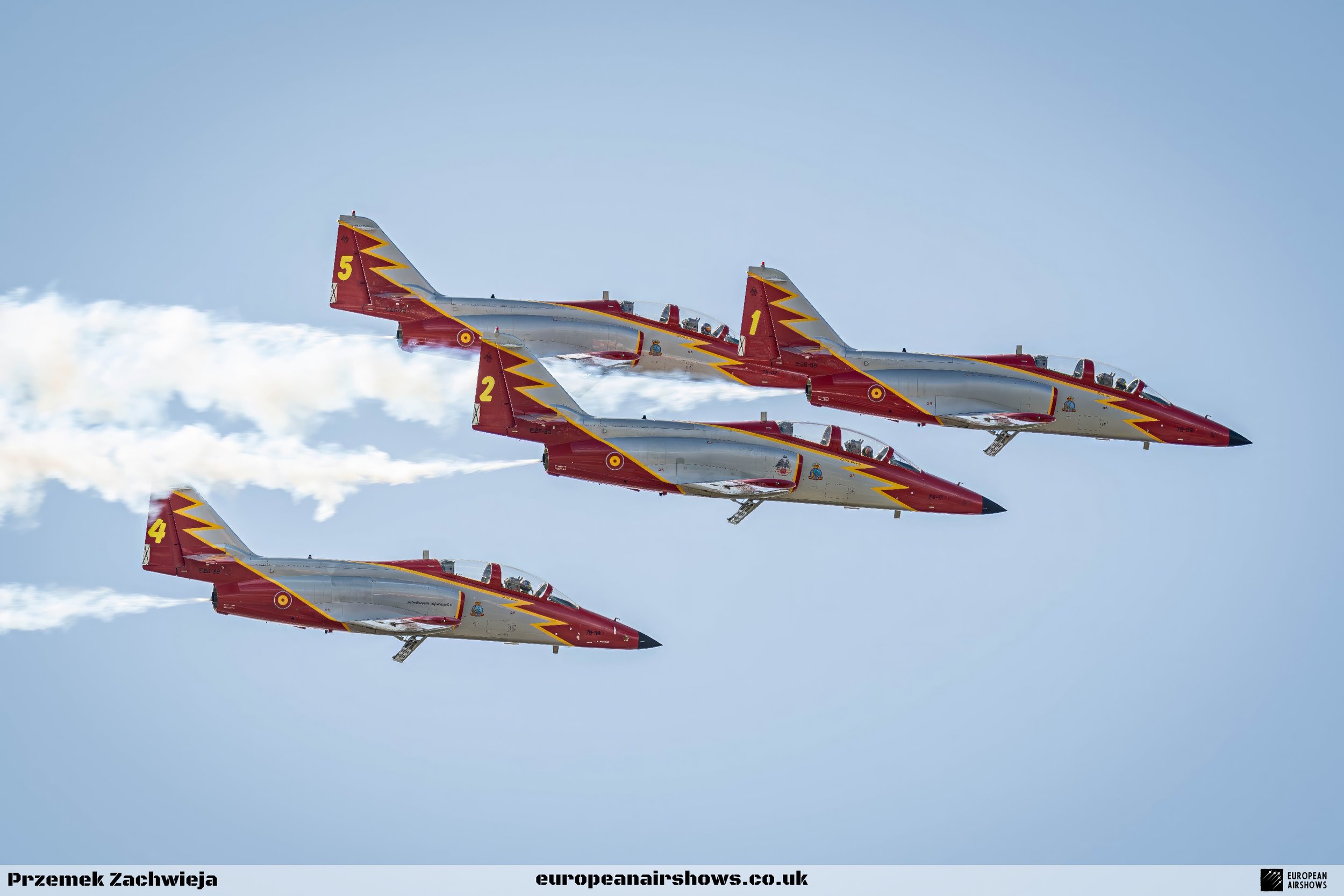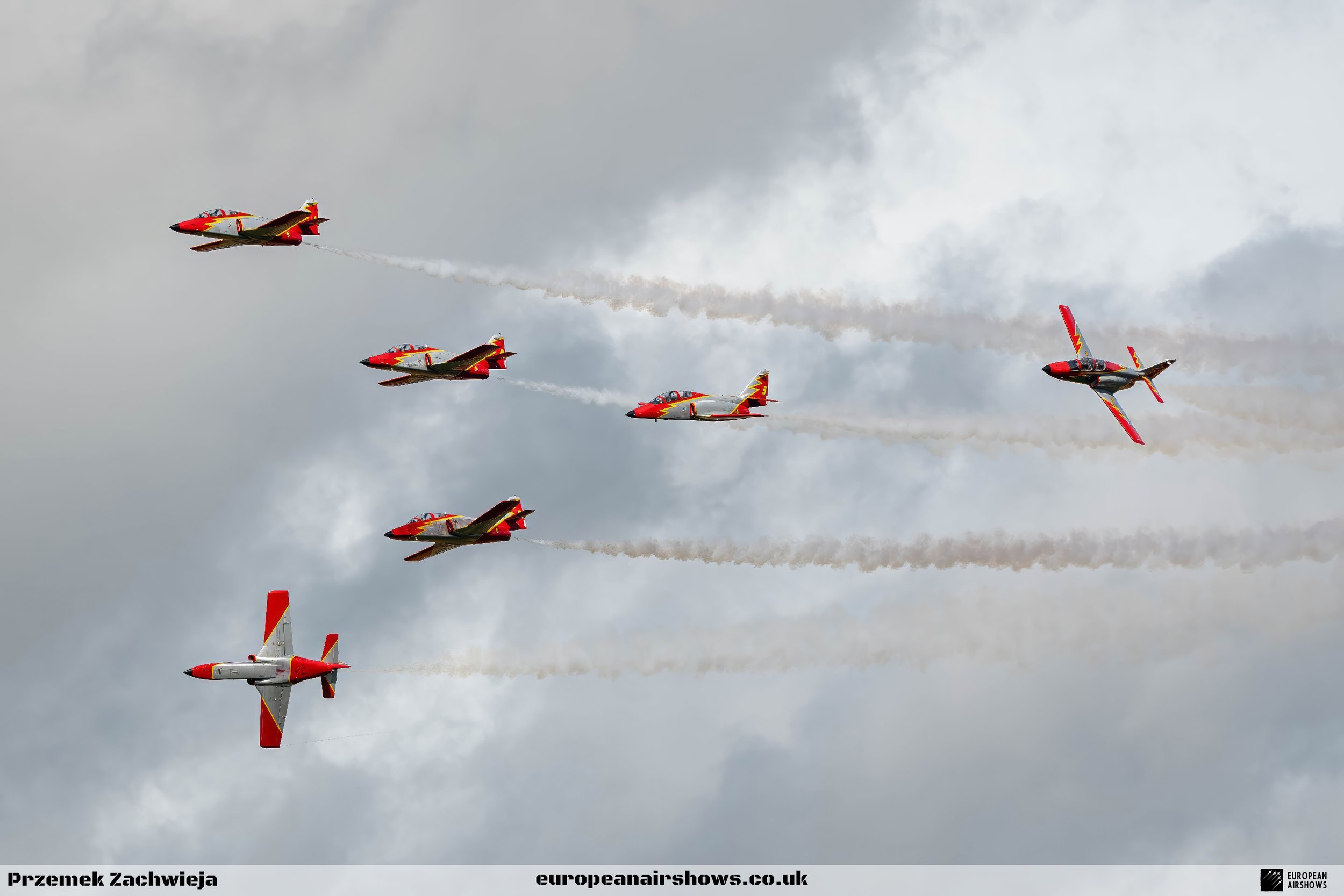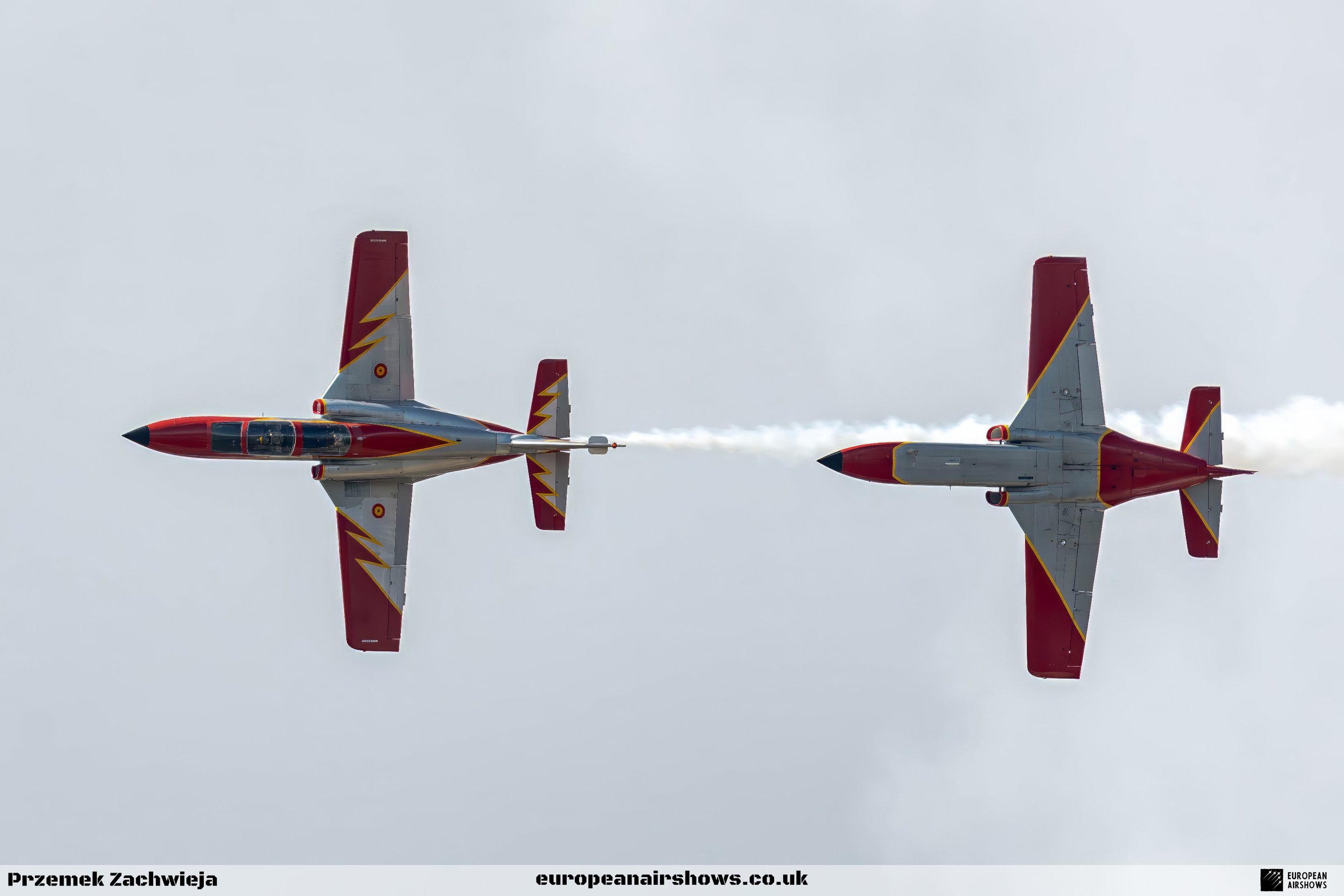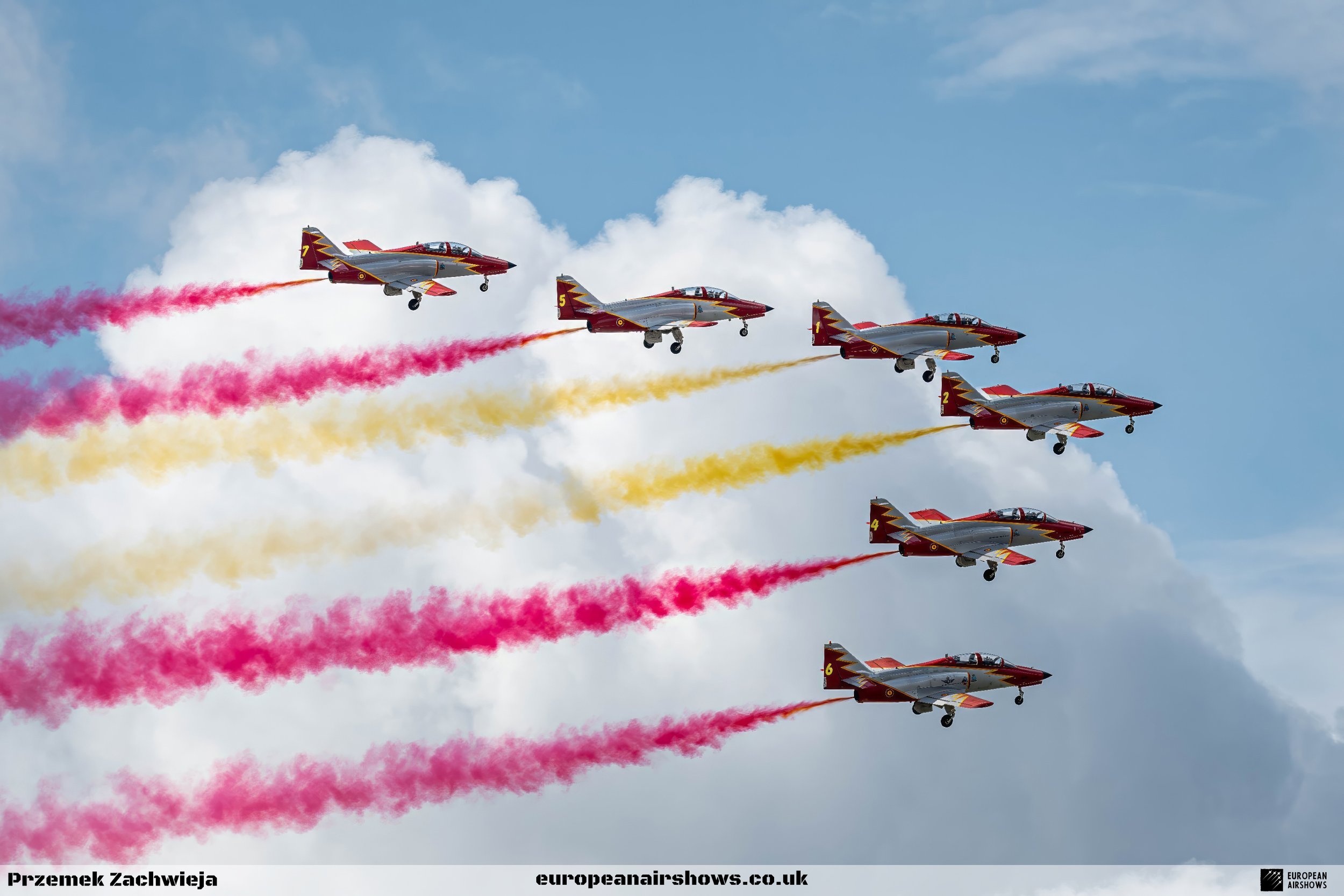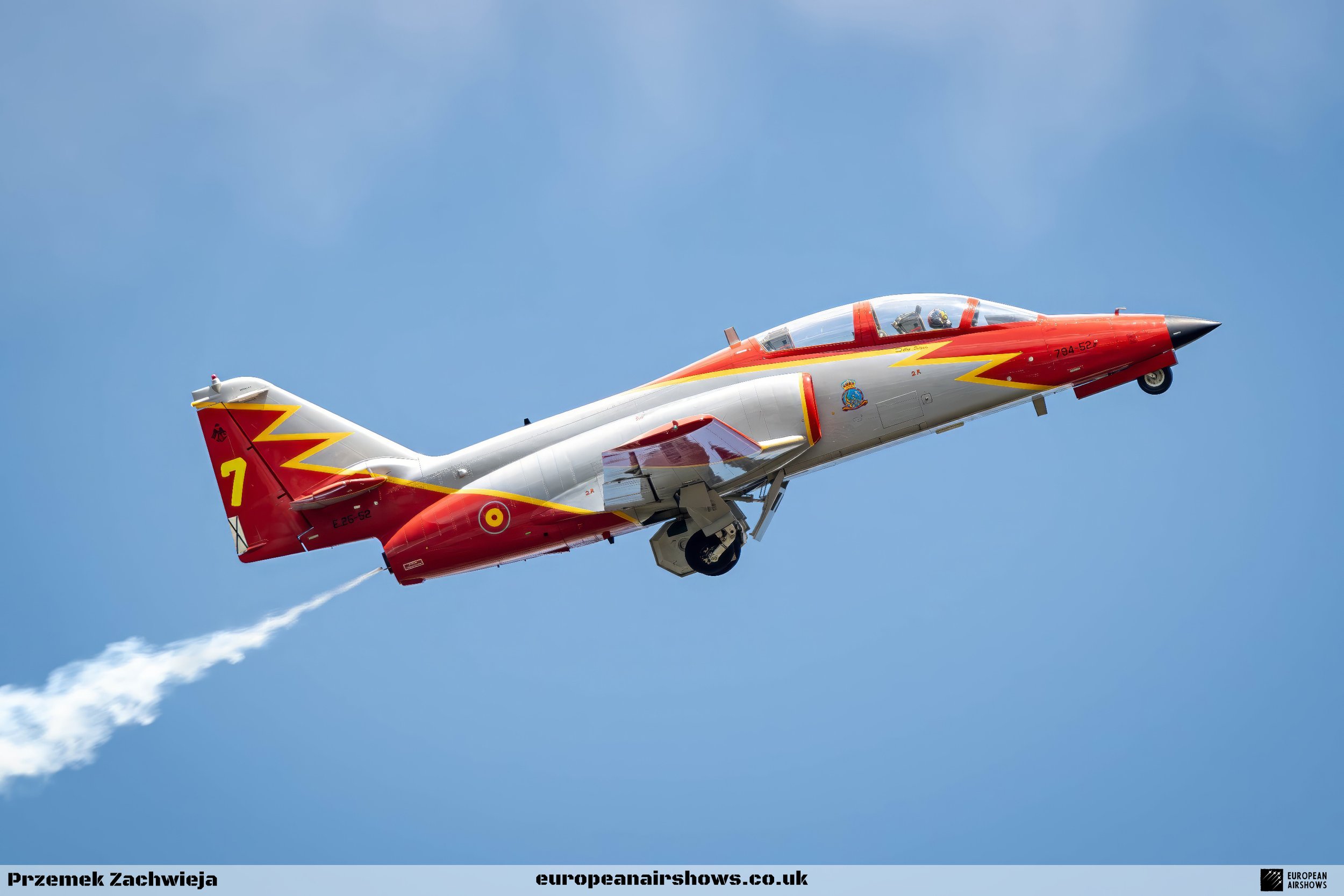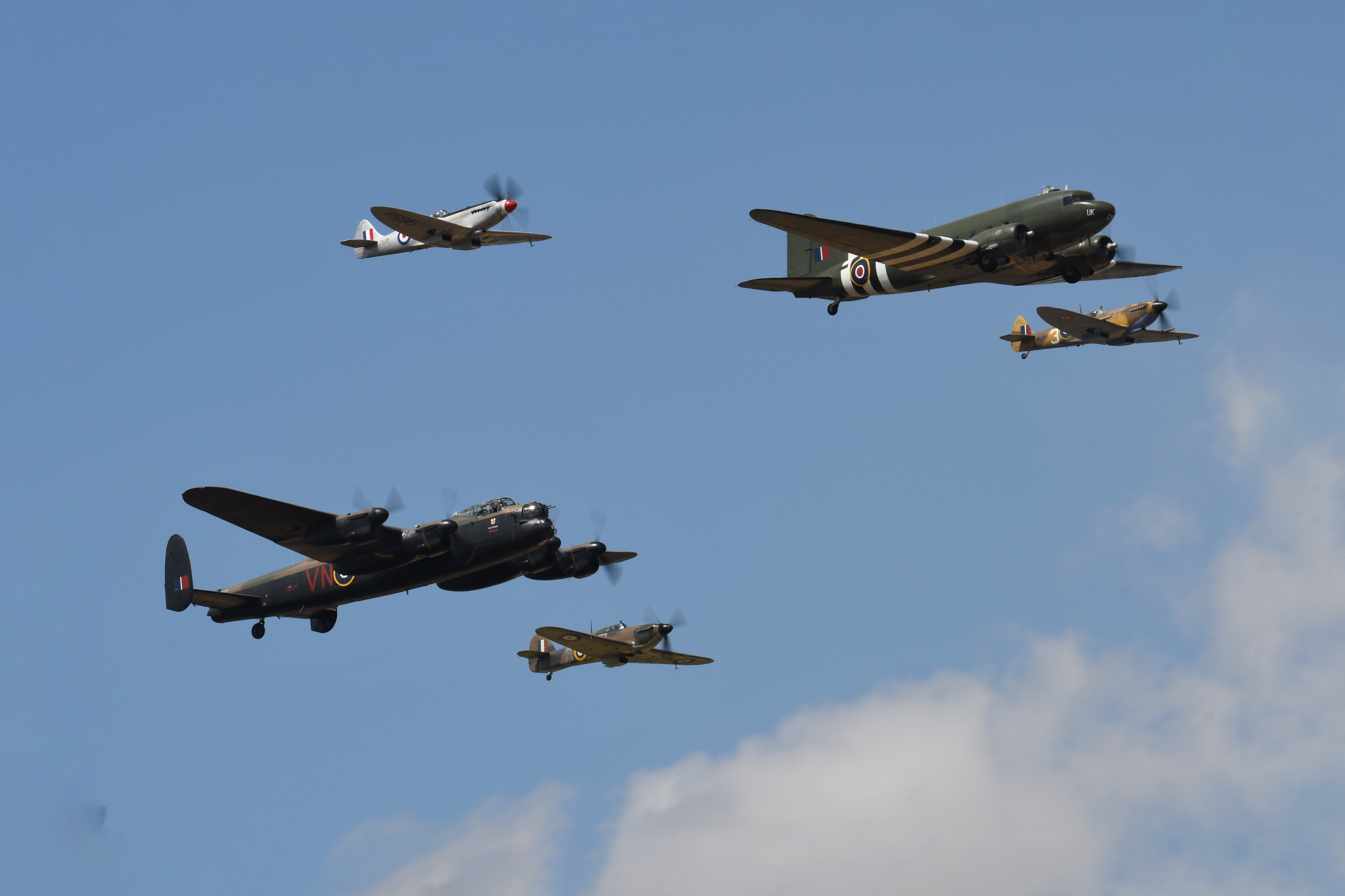Patrulla Aguila
Country
Spain
Size
6 Aircraft
Base
San Javier Air Base
Patrulla Águila (Spanish for "Eagle Patrol"), formed on 4th of July 1985, is the aerobatic demonstration team of the Spanish Air Force. The team is based at San Javier Air Base at the location of the academy of officers of the Spanish Air Force, near Mar Menor and La Manga, in the Murcia region of Spain. The team consists of 12 Spanish-built CASA C-101 Aviojet jet trainers however only seven of them actually fly in airshows. Patrulla Aguila consists of 11 pilots each using the callsign "Aguila" and 30 ground personnel, 16 of which are first-line technicians who travel with the team and look after the jets during the airshow season. All pilots in the team are full-time flight instructors with different military backgrounds who fly as an aerobatic team in their free time. Patrulla Aguilla is one of very few teams in the world to have a spare display pilot who when needed can fly the display.
Patrulla Aguila is the only military team in Europe to use yellow smoke and is well known for their formation landings. The team has three different displays depending on the weather conditions the first high display when the cloud base is greater than 4500 feet at the base of the manoeuvre, Low display when the cloud base is greater than 2500 feet at the base and a flat display with the cloud base from 1500 feet at the base. The team perform a 20-minute display which is split into two halves, in the first half, all seven aircraft perform challenging close formation aerobatics that includes barrel rolls and loops while constantly changing formations before breaking for the more dynamic second half. In the second half, the team separates into three formations: a basic four-ship formation, a solo, and synchro pair. Patrulla Aguilla is the only team in the world to perform an inverted loop on a jet a very challenging and uncomfortable manoeuvre performed by the team’s most experienced solo pilot.
History
The Eagle Patrol was founded in the Basic School of the Matacán Military Base (Salamanca), in 1954. Although during the 50s and 60s there were various aerobatic patrols in Spain, they were:
Patrol of the Talavera la Real Air Base (Badajoz).
Patrol of the Los Llanos Air Base (Albacete).
Ascua Patrol of the Manises Air Base (Valencia).
The entry into service of the CASA C-101, a Spanish-made aircraft ideal for performing stunts, led to the creation in 1985 of a permanent air patrol, led mainly by Captain Carrizosa.
The patrol realized its first training on the 4th of June 1985, with the best pilots from the Spanish Air Force selected for the role. The team started flying on five aircraft that was quickly increased to seven followed by the new paint scheme on the jets that was inspired by the extinct Patrol Ascua.
Currently, the Patrulla Aguila, having completed twenty-five seasons since its foundation, accumulated more than 25,000 flight hours, and has participated in more than three hundred airshows, both civil and military, including the Universal Exhibition of Seville (where they used for the first time coloured smoke, to draw the Spanish flag), the opening of the Volvo Ocean Race in November 2005 in Vigo or the Olympic Games in Barcelona. One of his most recent acts of presence in large mass shows was in the celebration of the soccer world championship achieved by Spain in 2010.
| Back to Top |
Signature Formations
Faca
Aguila
Póker
| Back to Top |
CASA C-101 Aviojet
The CASA C-101 Aviojet is a low-wing single engine jet-powered advanced trainer and light attack aircraft designed and manufactured by Spanish aircraft company Construcciones Aeronáuticas SA (CASA).
The C-101 was developed in response to a Spanish Air Force requirement, which needed a replacement for the already outdated Hispano Saeta. In 1975, CASA commenced work on what would become the C-101. In addition to its own design team, technical assistance was provided by Germany's Messerschmitt-Bölkow-Blohm (MBB) and the United States' Northrop. In June 1977, the first of four prototypes performed the type's maiden flight. The design was somewhat reminiscent of other jet trainers of the era, such as the BAE Hawk and the Alpha Jet, but was less aerodynamically sophisticated, being equipped with an unswept wing. Performance of the C-101 during flight testing was reported in excess of predictions.
On the 17th of March 1980, the first examples were introduced to operational service with the Spanish Air Force, which would be the principal customer for the C-101. The initial model possessed only a limited weapons capability, this attack capability was expanded upon later-built aircraft. Several models were exported to overseas operators; the C-101 has been adopted by the Chilean Air Force, Honduran Air Force and the Royal Jordanian Air Force. A final improved model, designated C-101DD, was demonstrated but did not find customers and thus it did not enter serial production. In addition to its use as a trainer aircraft, it has been used to perform aerobatics; in the latter context, it has been flown by the Patrulla Aguila aerobatic demonstration team. As of 2019, the C-101 remains in service in the Spanish Air Force and several other countries.
Early in 2010, there were talks about the replacement of the C-101. Finally, in 2020 it was decided that the C-101 would be replaced by the Pilatus PC-21 and the Airbus Future Jet Trainer.
The C-101 was designed in response to a Spanish Air Force requirement issued in 1975, calling for a new jet trainer to replace its ageing fleet of Hispano HA-200s and Ha.220s. Akin to the majority of contemporary European jet trainers, it was also to have a limited attack capability. During 1972, Hispano had been absorbed by Spanish aircraft company Construcciones Aeronáuticas SA (CASA), who took an interest in the trainer requirement. In October 1975, CASA was awarded a development contract based upon their submission, requiring a pair of static airframes and four flight-capable prototypes to be built for testing purposes at a cost of 1,297 million pesetas ($22 million).
To develop the aircraft, CASA sought technical assistance from overseas. Both the German manufacturing conglomerate Messerschmitt-Bölkow-Blohm (MBB) and American defence company Northrop opted to participate in the venture; specifically, engineers at MBB worked on the design of the rear fuselage and tail section while Northrop's team were responsible for the design of the aircraft's wings and engine inlets. Out of these efforts, a relatively conventional design was developed; according to aviation author John C. Fredriksen, the principles of simplicity and economy were highly emphasised by the design, shunning high-performance features.
In terms of its basic configuration, the C-101 is a low-mounted monoplane, the wings were unswept. The cockpit, which was relatively spacious amongst its peers, accommodated a crew of two in a tandem seating; the seats were staggered to provide the instructor in the rear position with greater visibility. The fuselage provided considerable internal space, permitting the installation of various additional aviation or supplemental systems to suit future requirements or other secondary roles. Foreseen secondary roles included ground attack, armed escort, photographic reconnaissance, and as an electronic countermeasures (ECM) platform.
The only surprising feature of the aircraft was the presence of a large internal weapons bay located beneath the rear cockpit; this allowed for a wider variety of armament to be carried than the underwing hardpoints could accommodate; alternatively, this bay enabled the carriage of other equipment, including reconnaissance payloads. In addition to the weapons bay, both armaments and stores could be fitted upon six underwing hardpoints. The design was produced in a modular fashion, which eases both manufacture and maintenance activities. It was provisioned with a considerable endurance range as a result of the initial requirement having called for a self-deployment capability to the Canary Islands from the Spanish mainland.
The powerplant selected for the aircraft was the Honeywell TFE731-5-1J turbofan engine. This unit was actually a commercial engine that had been re-developed for military use. Even from an early stage of development, the TFE731 was viewed as a front runner for the aircraft. According to Fredriksen, it provided relatively favourable performance and a high level of fuel economy amongst its peers. Overall, the aircraft provided mainly favourable characteristics while remaining an affordable trainer in comparison to international competition.
| Back to Top |
